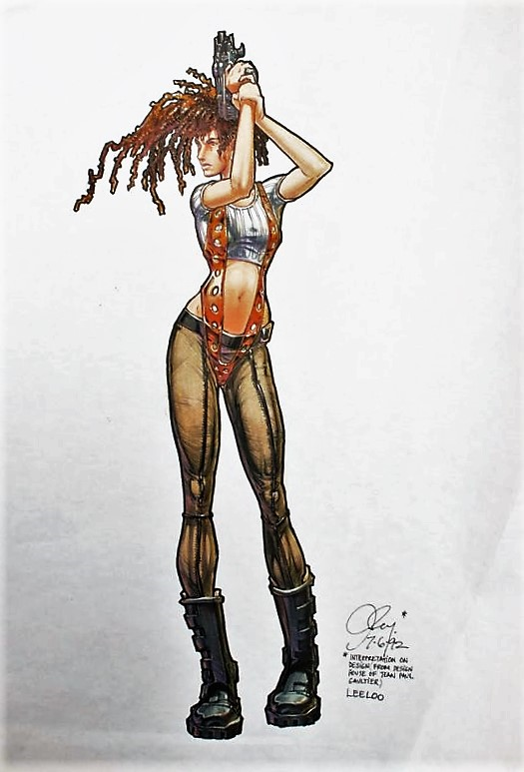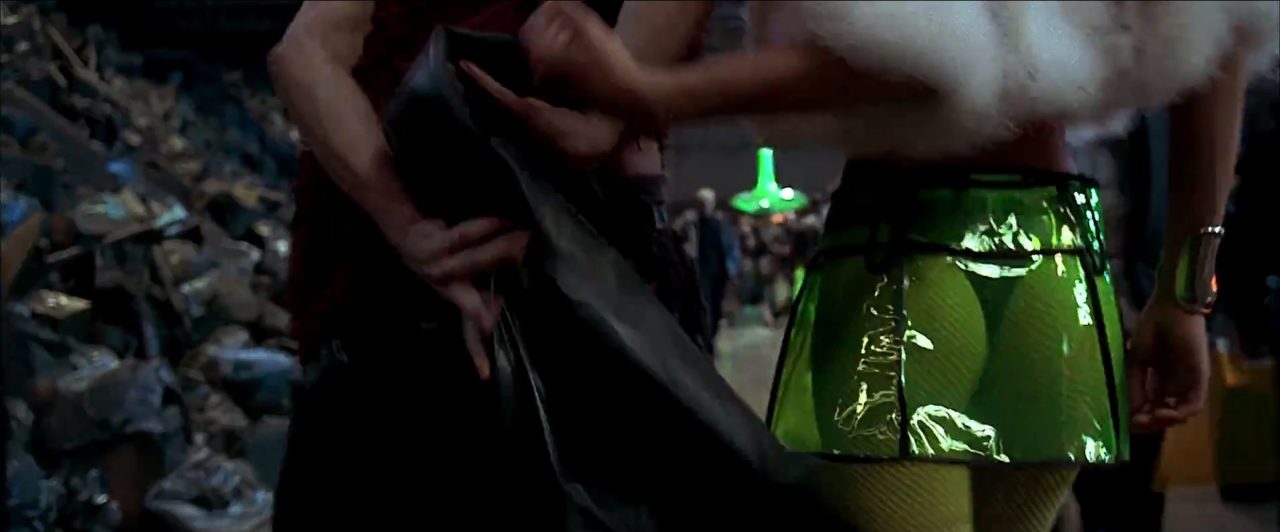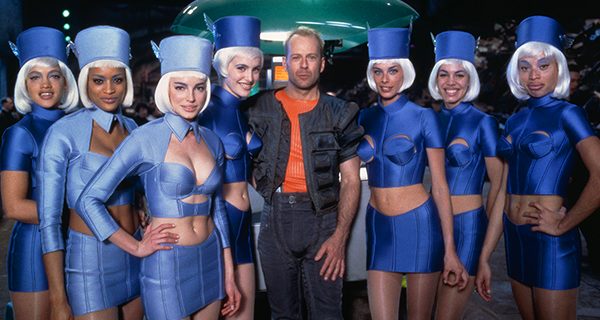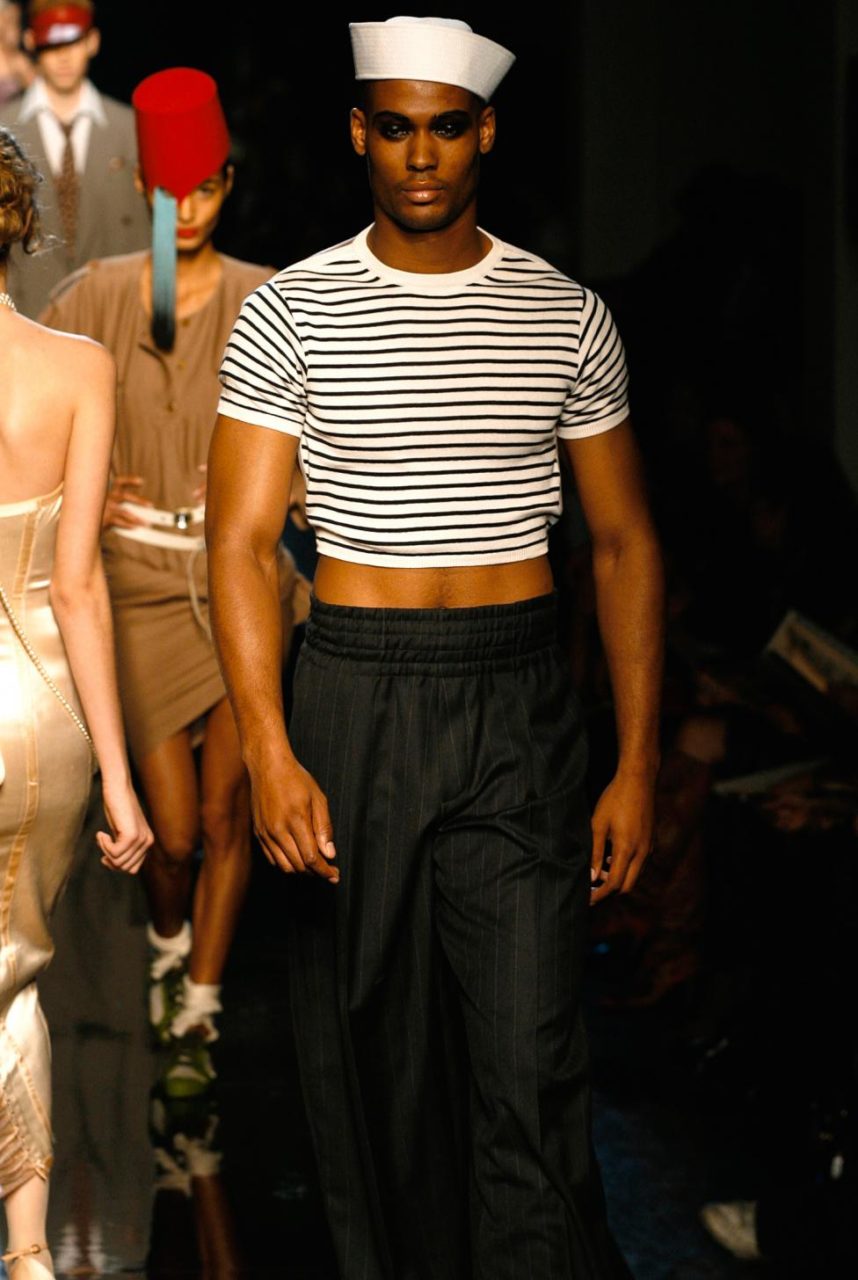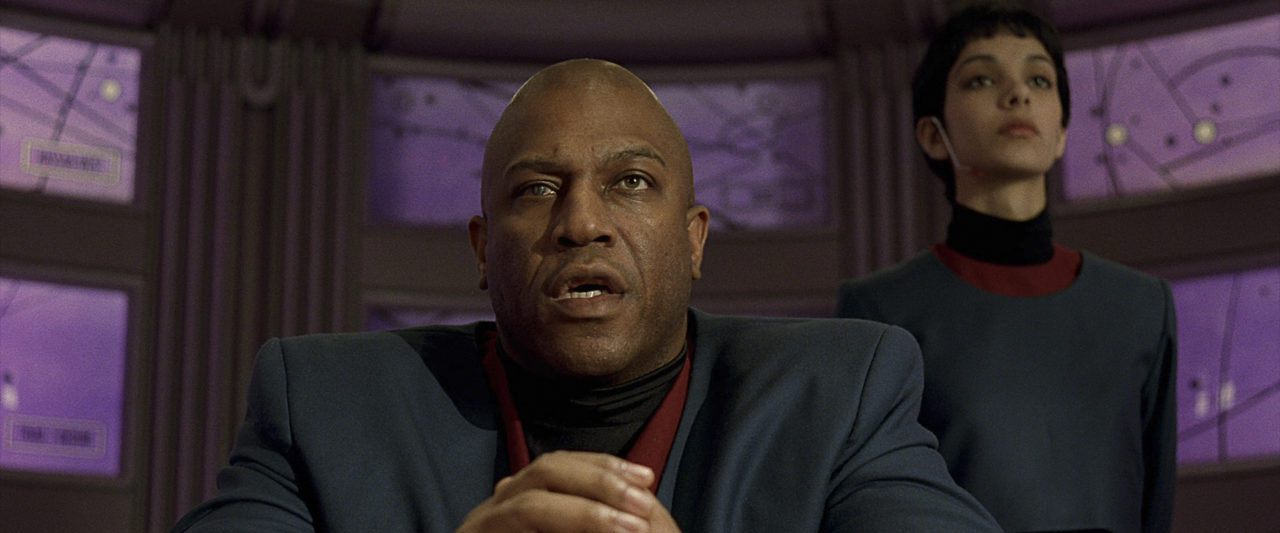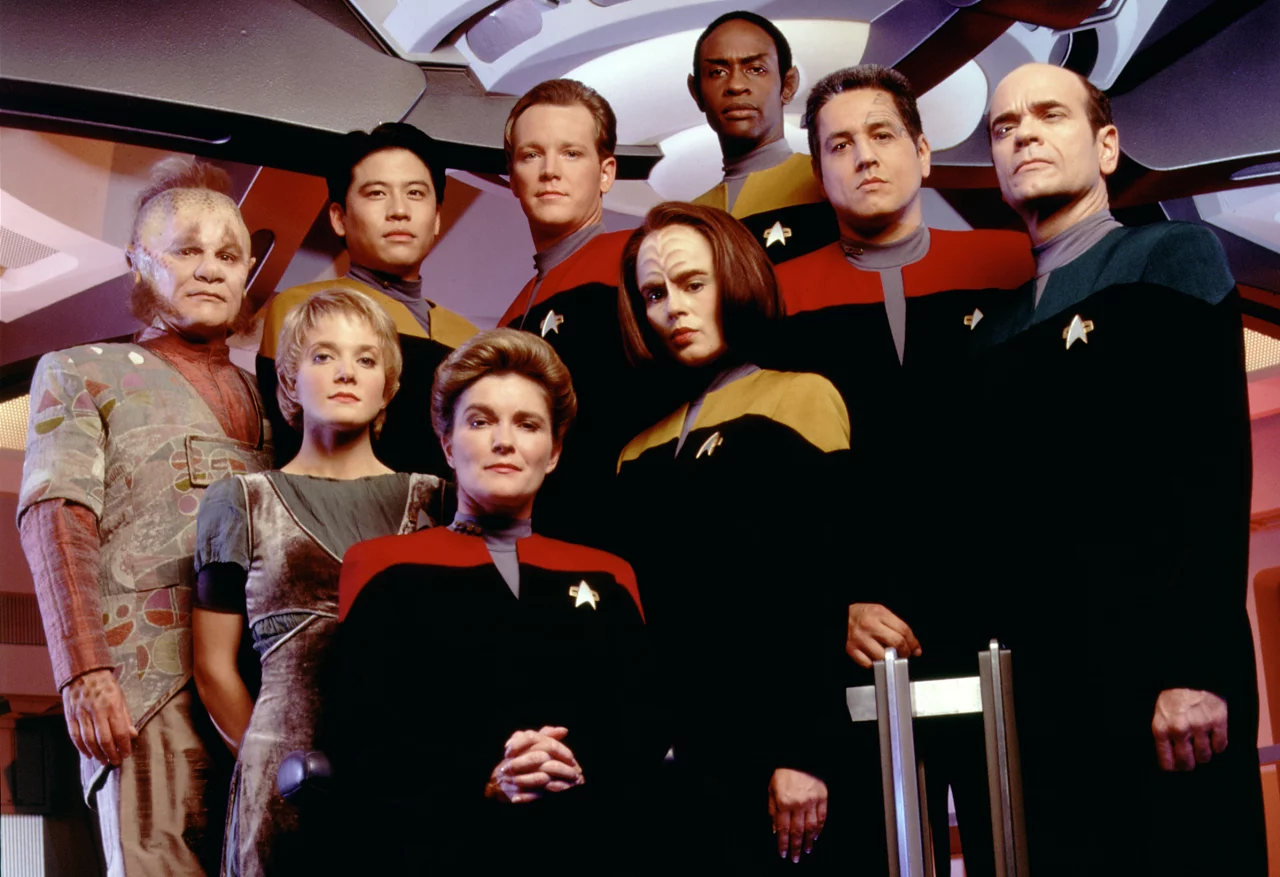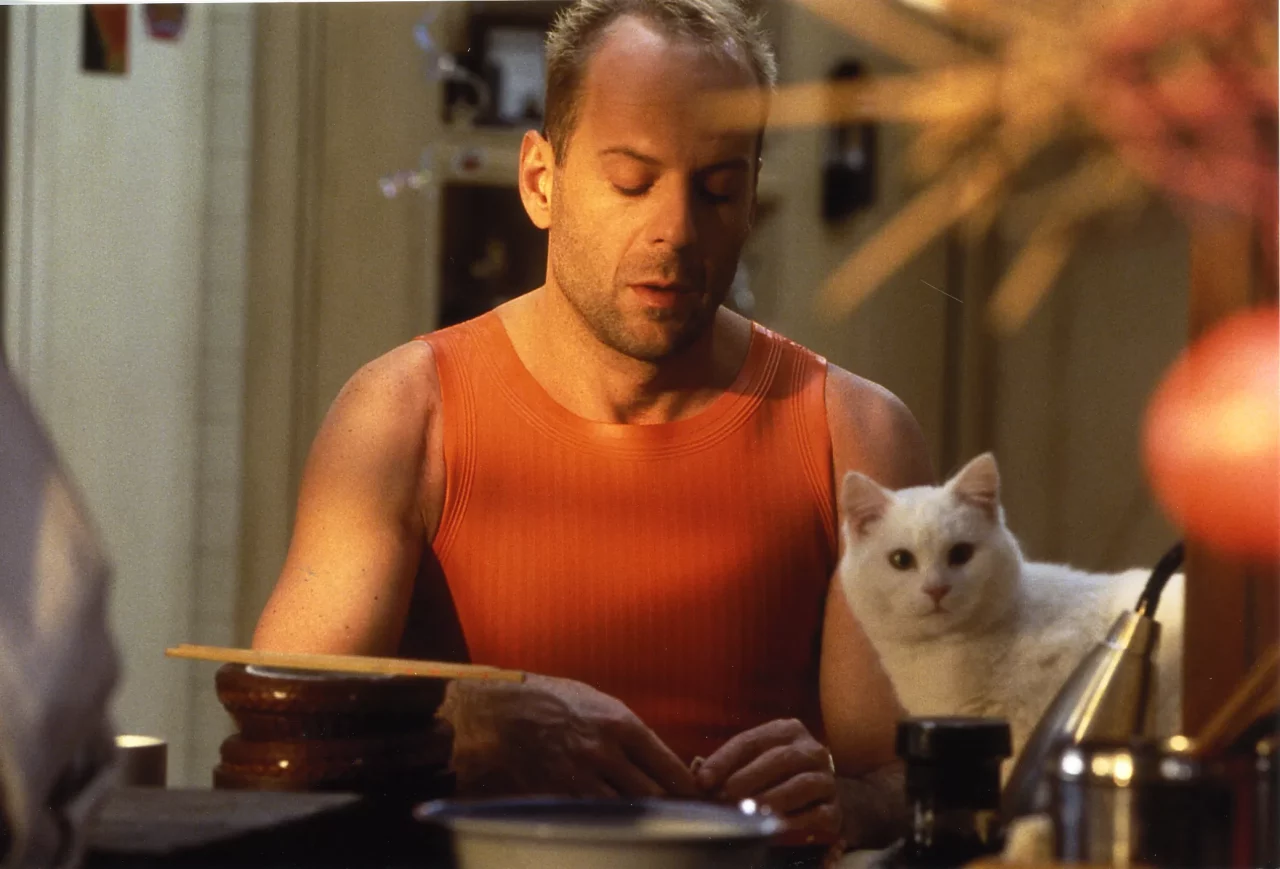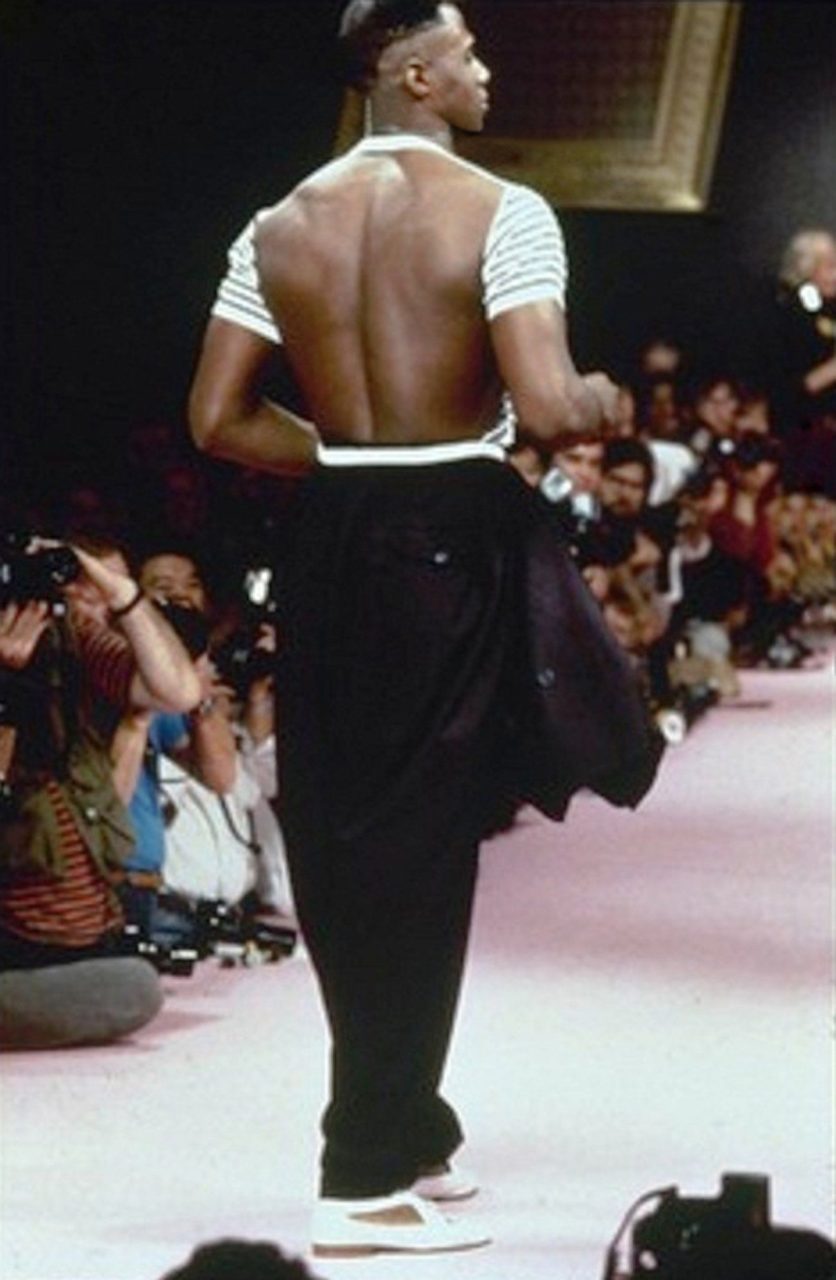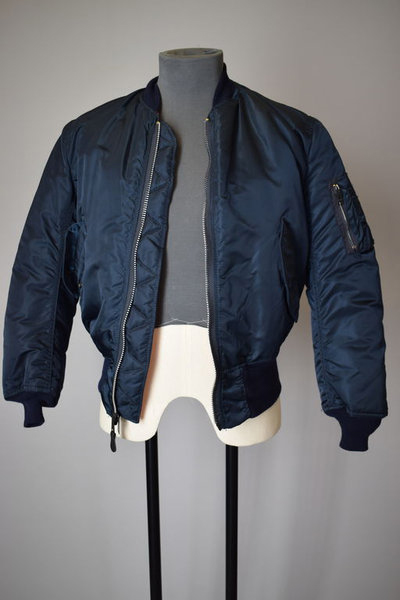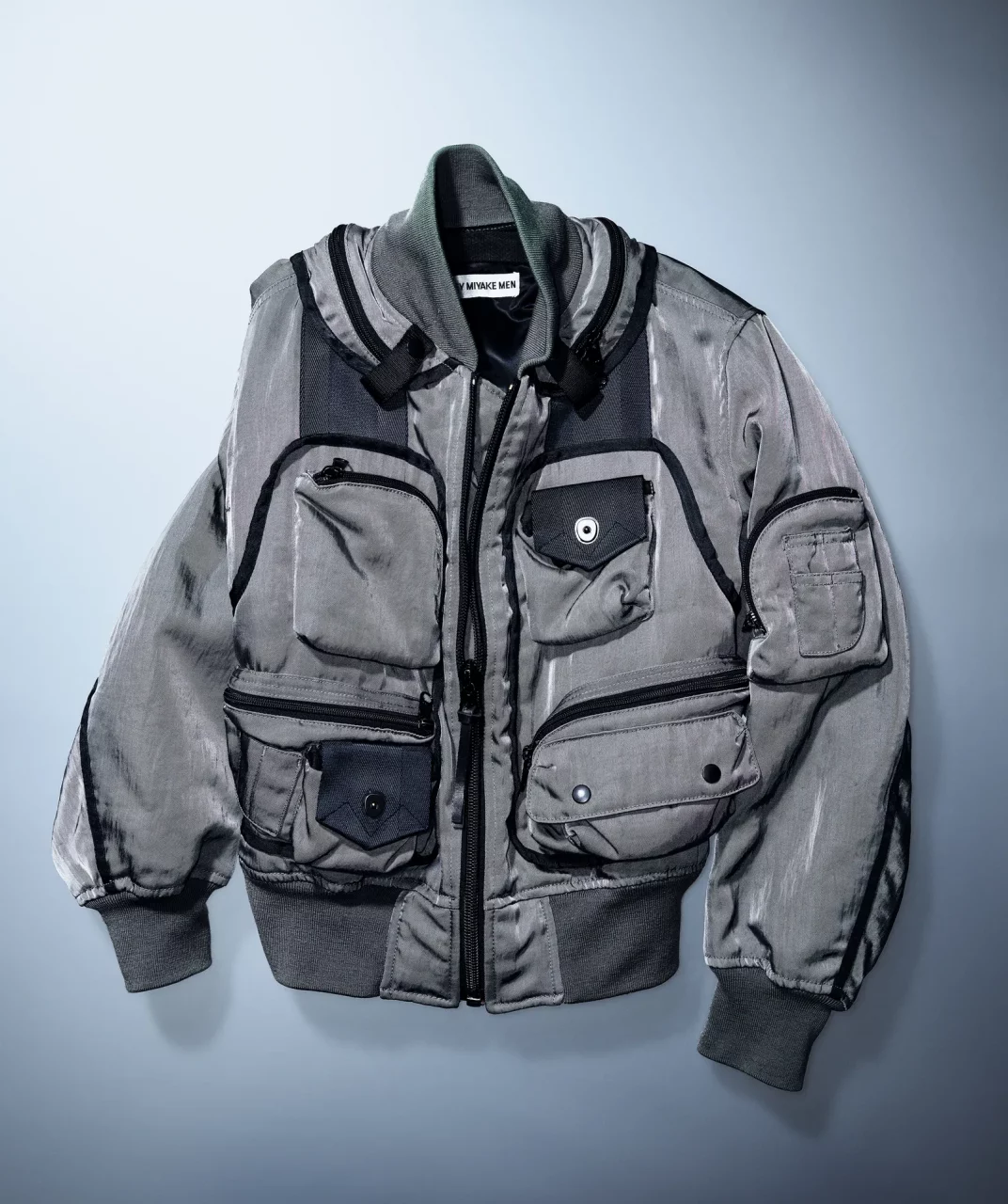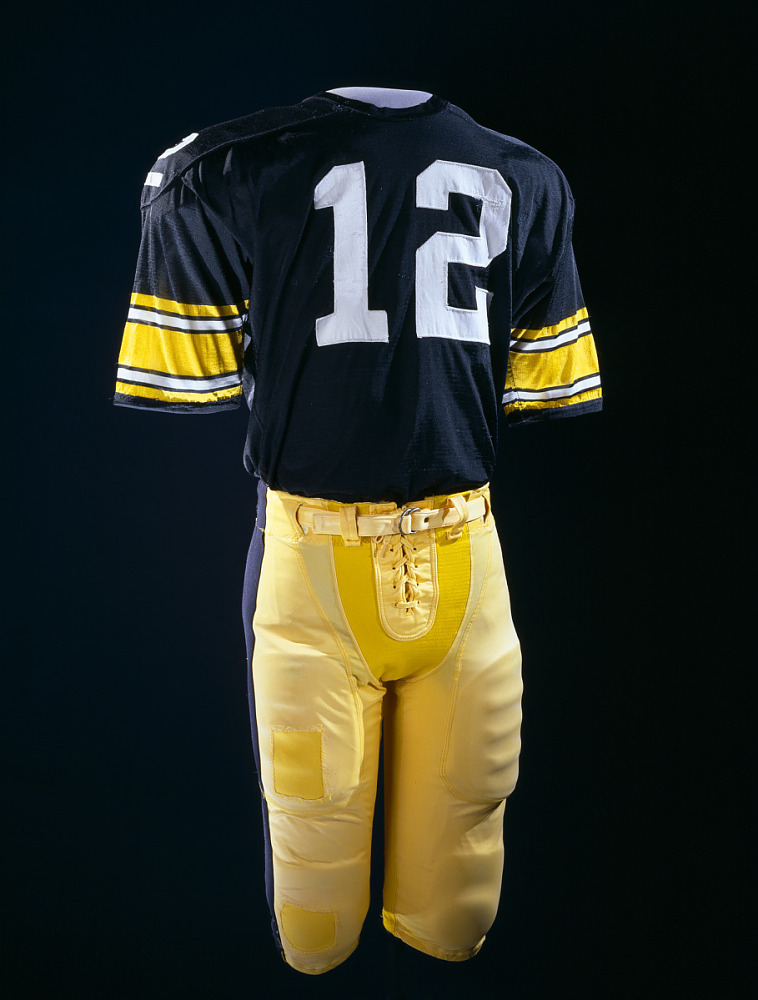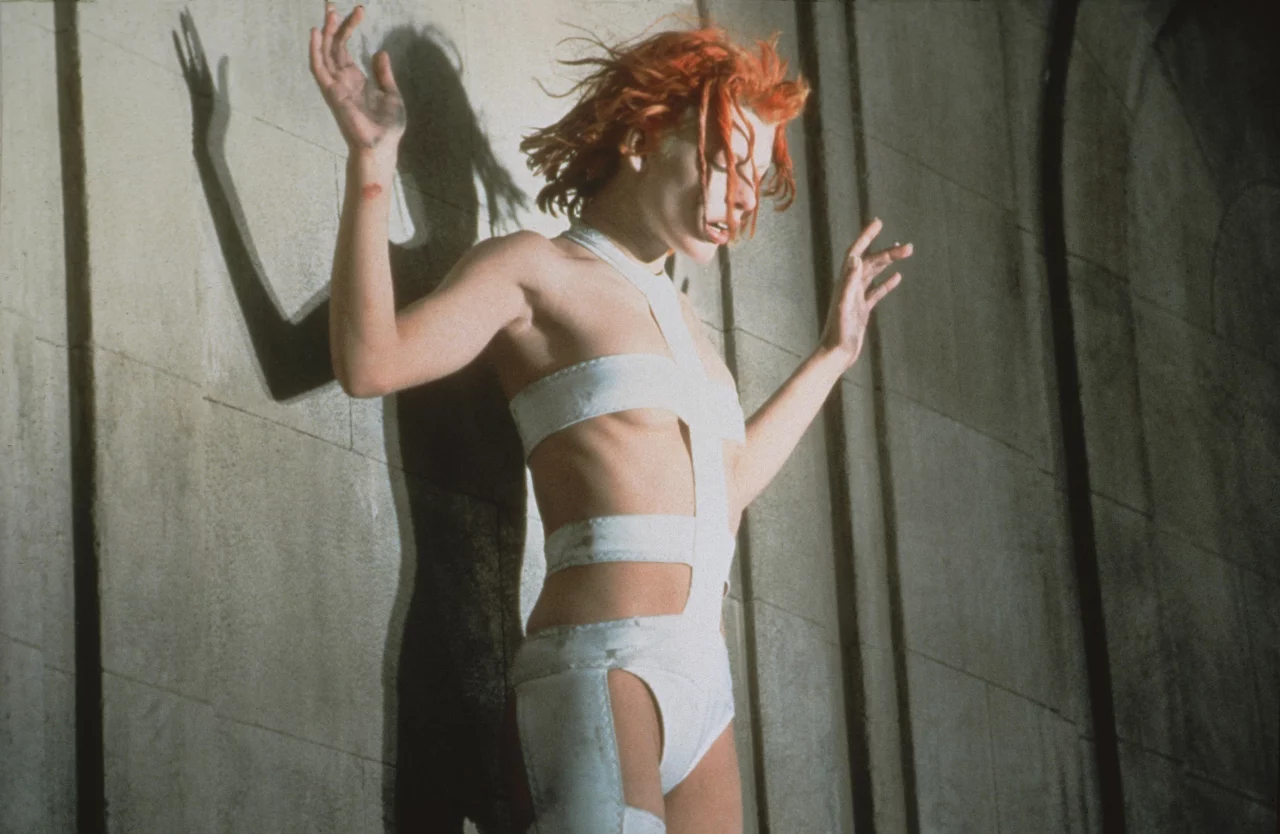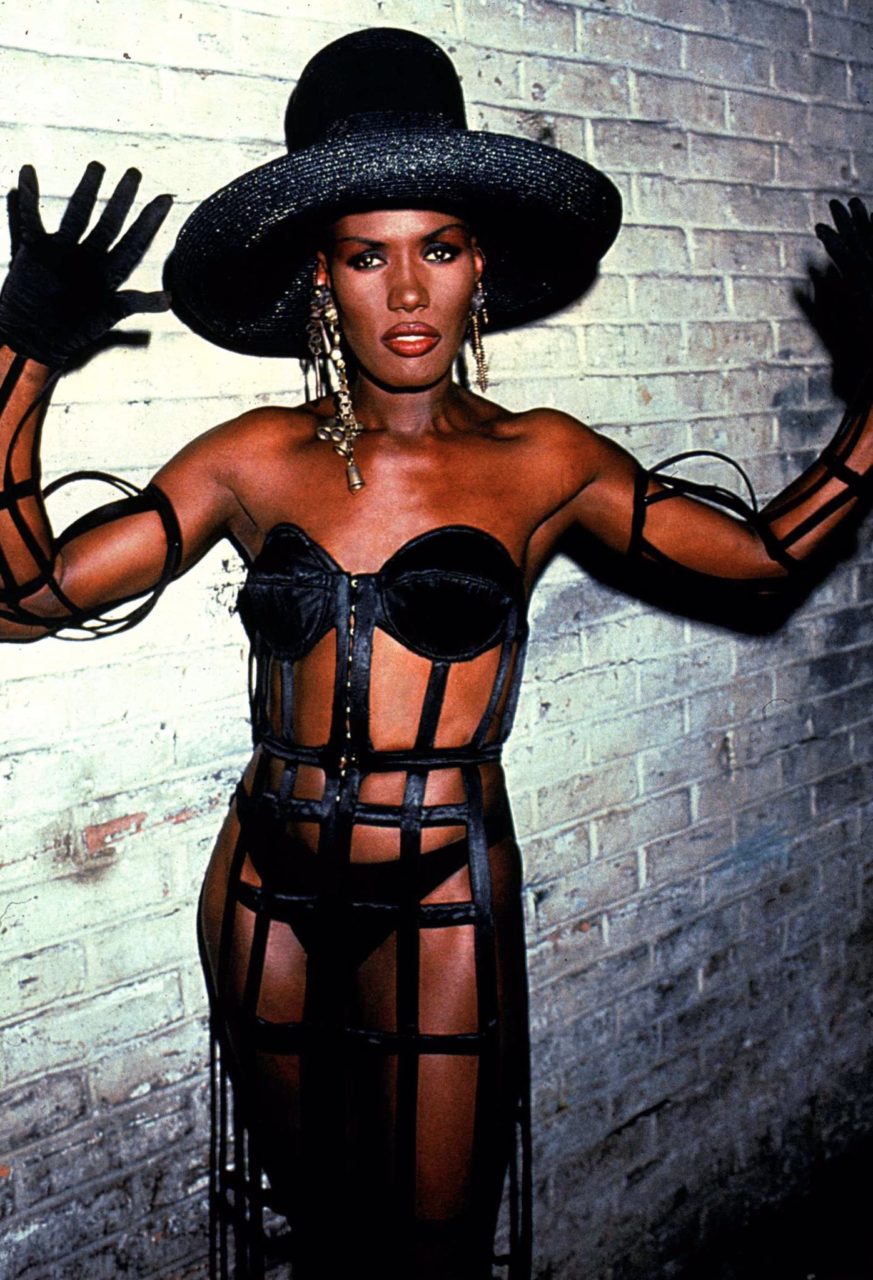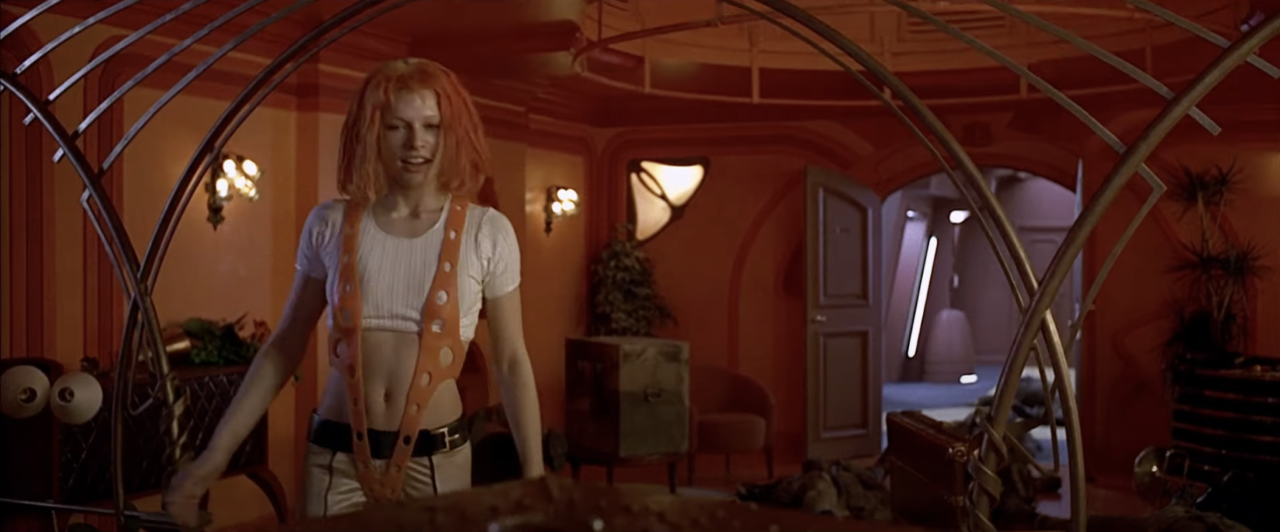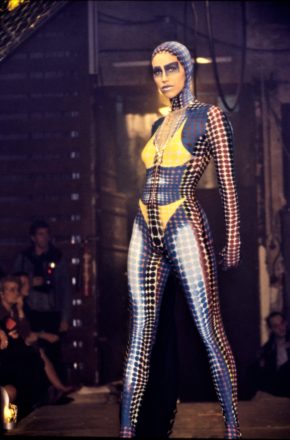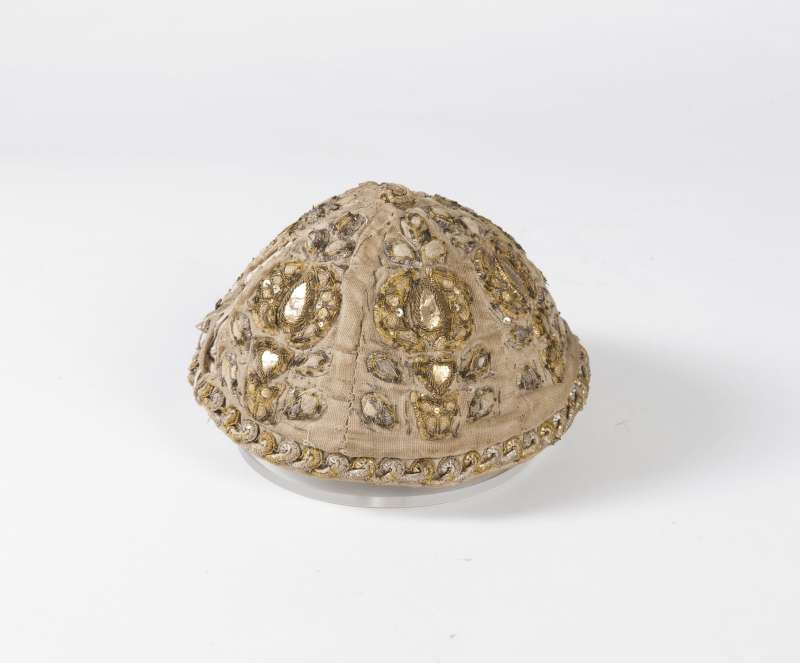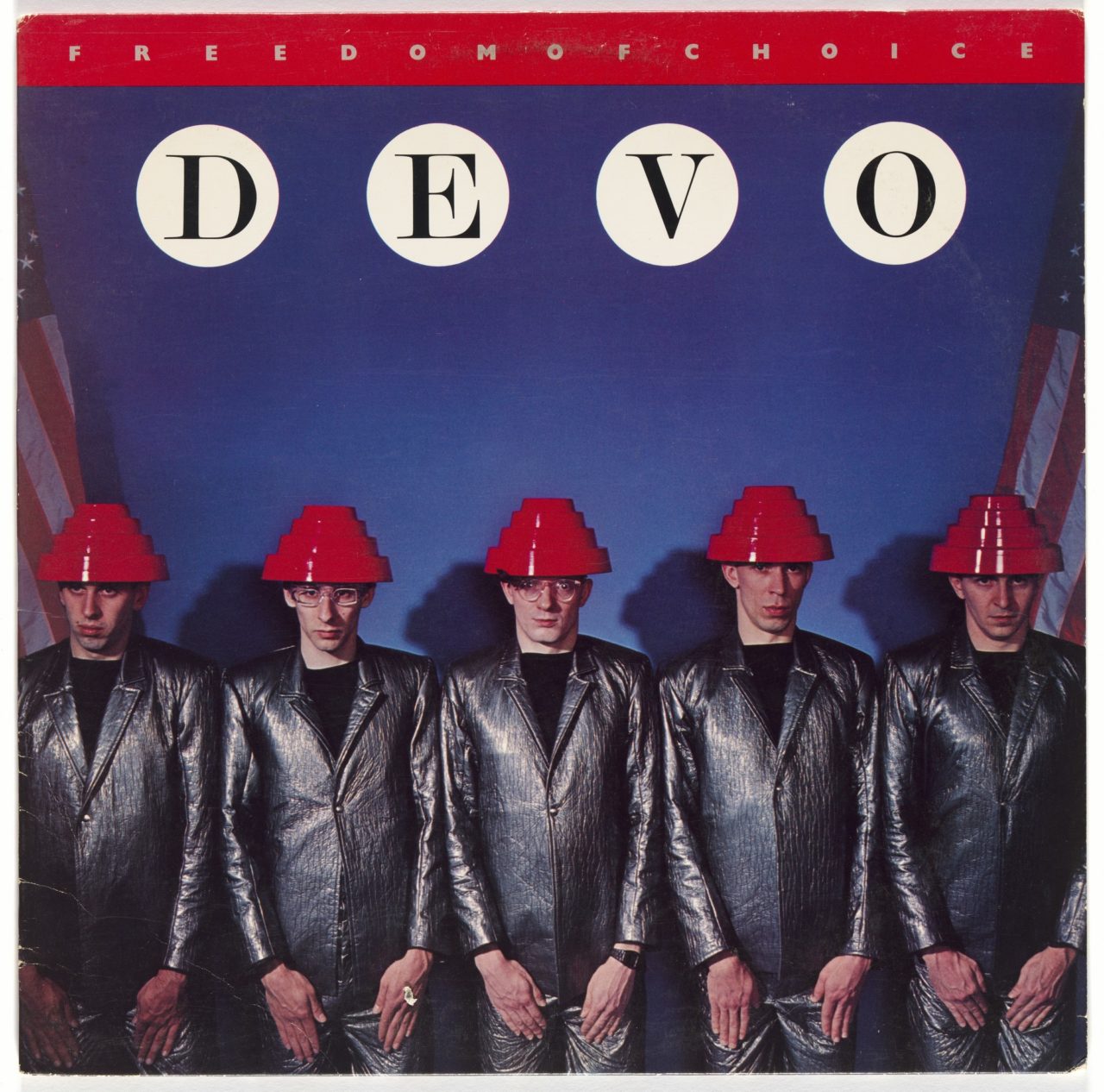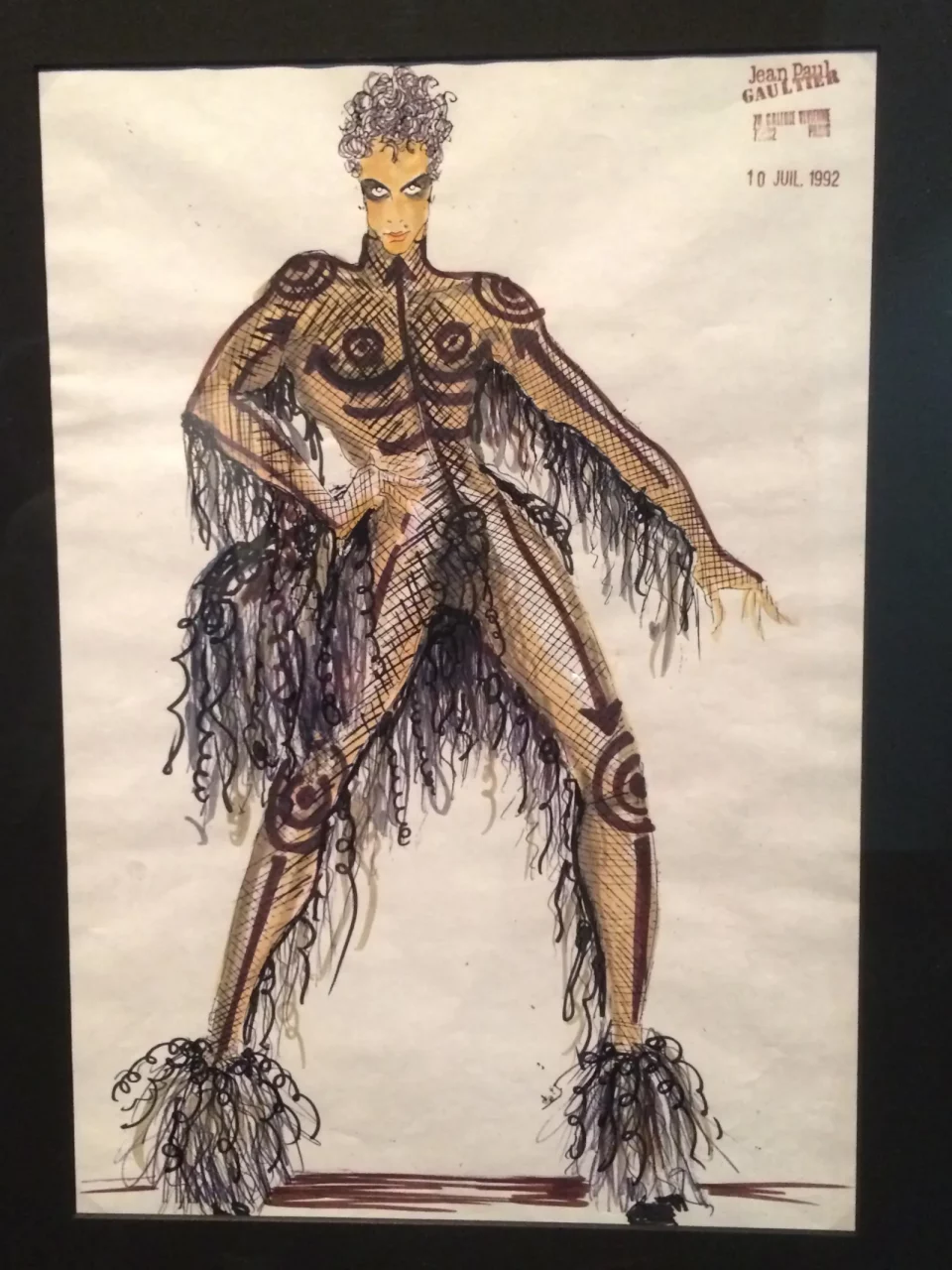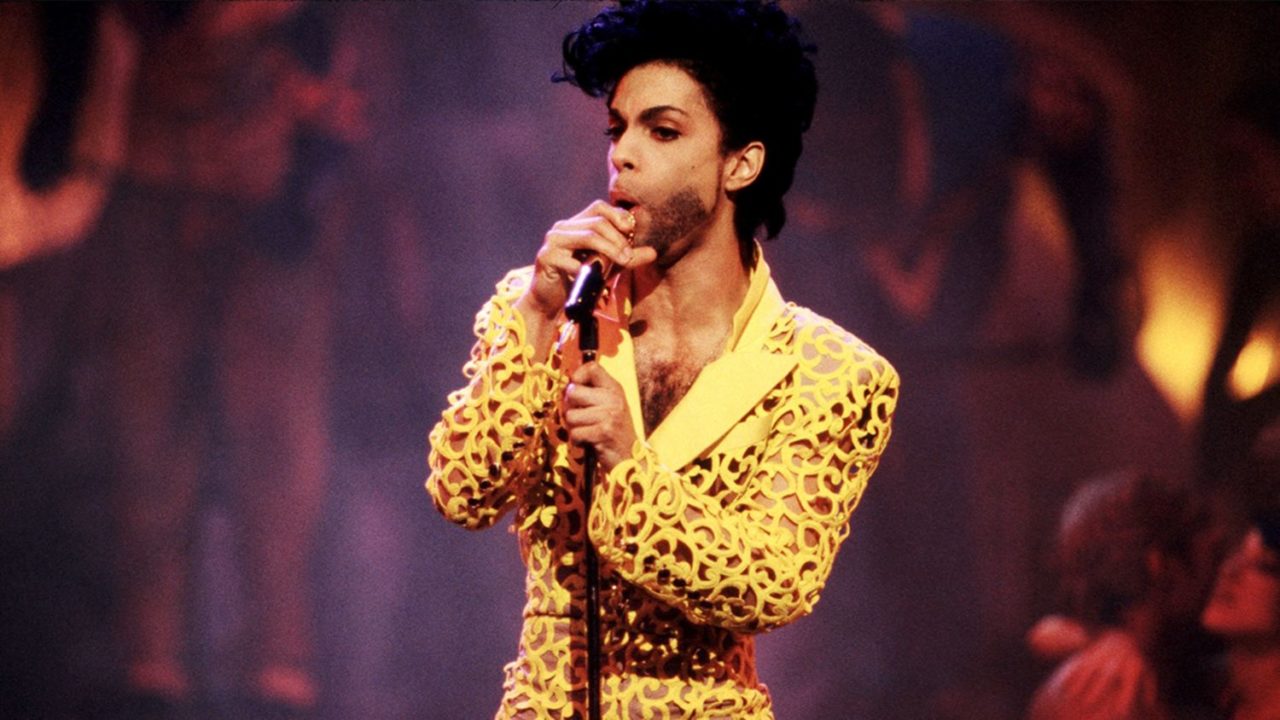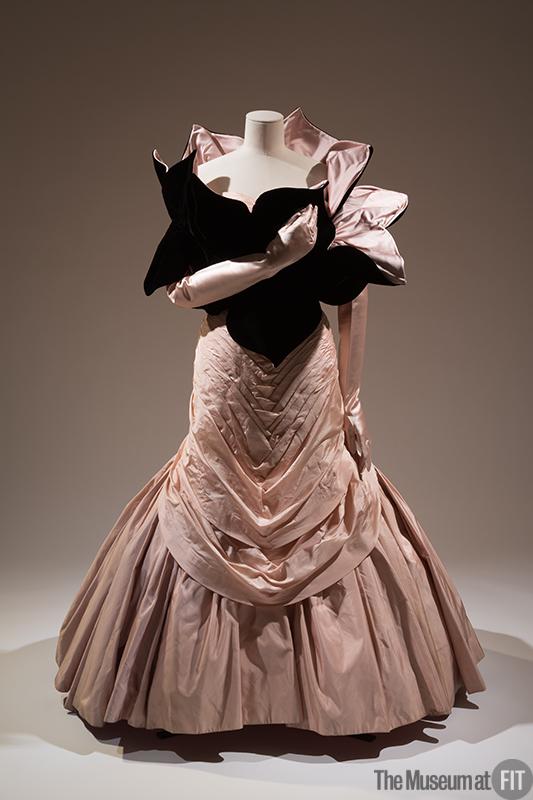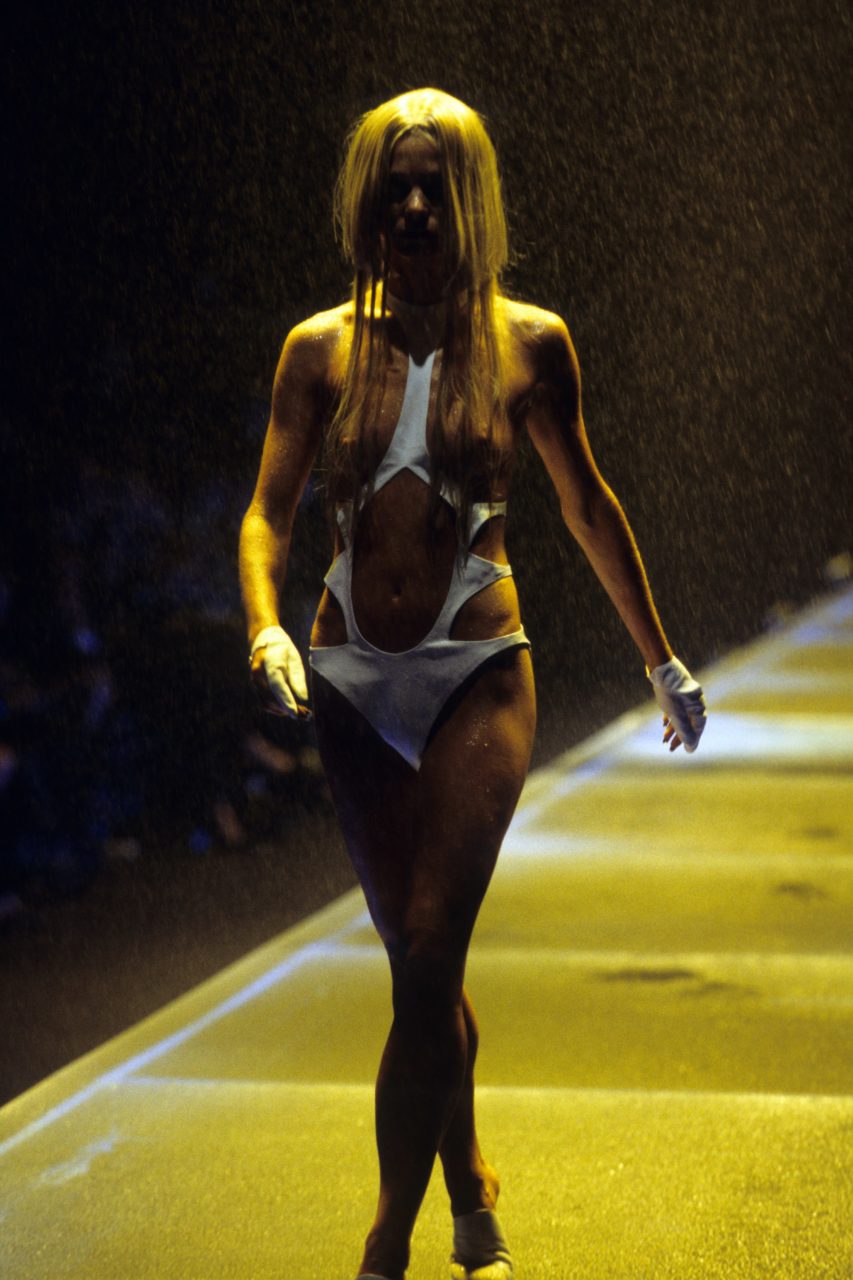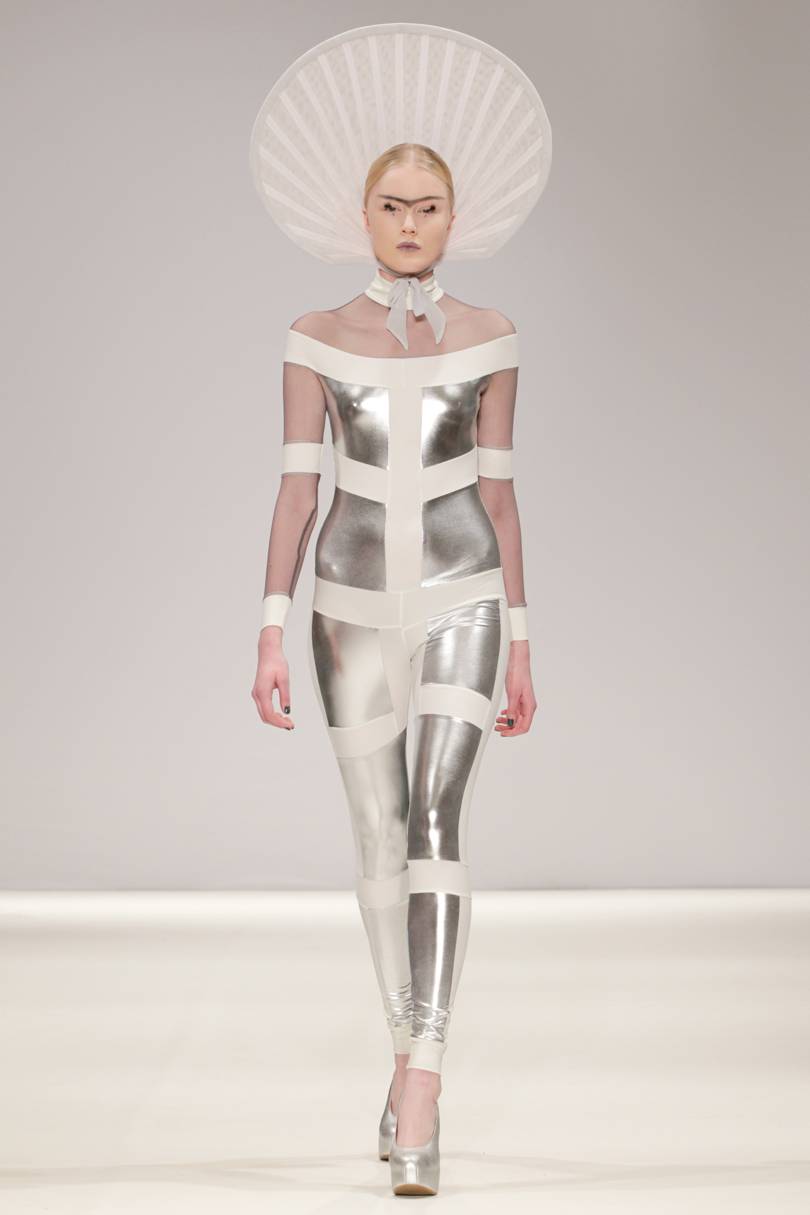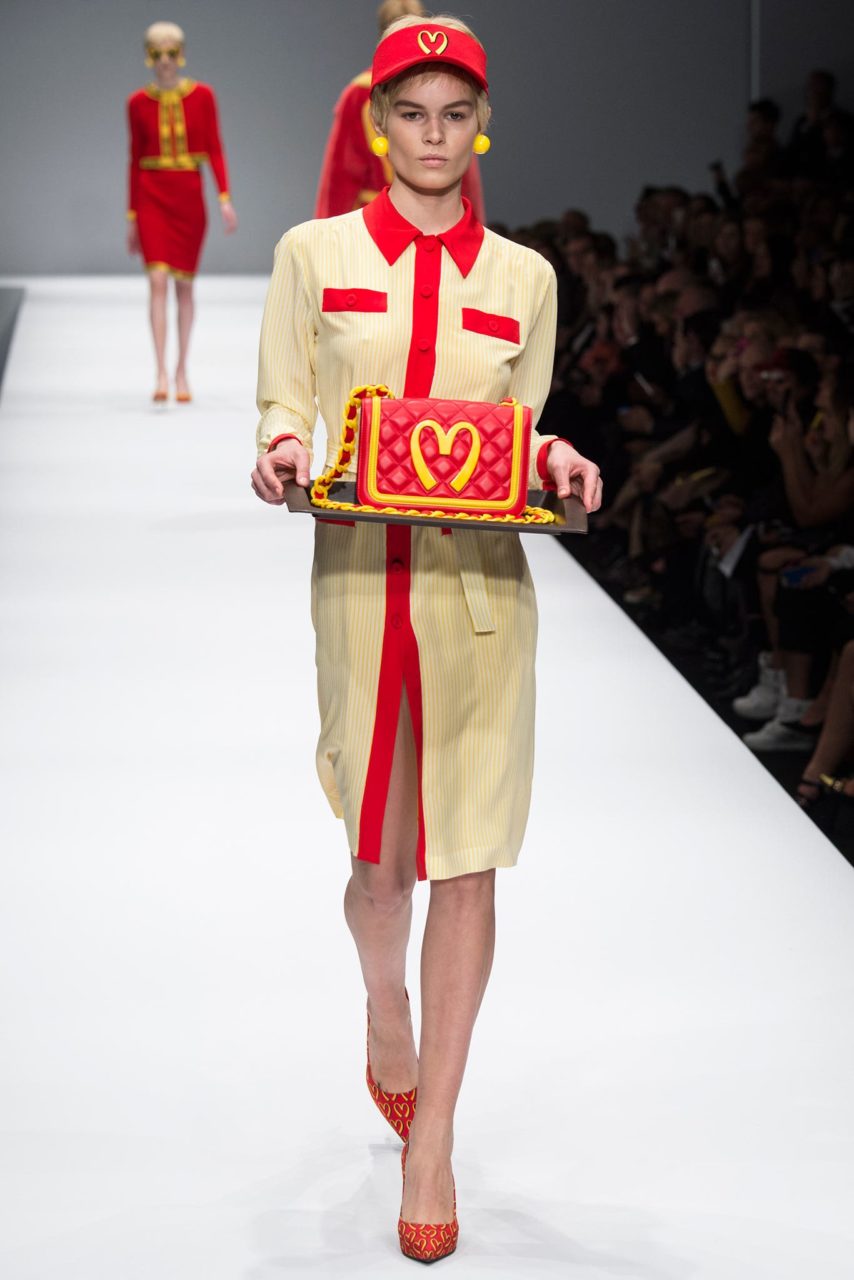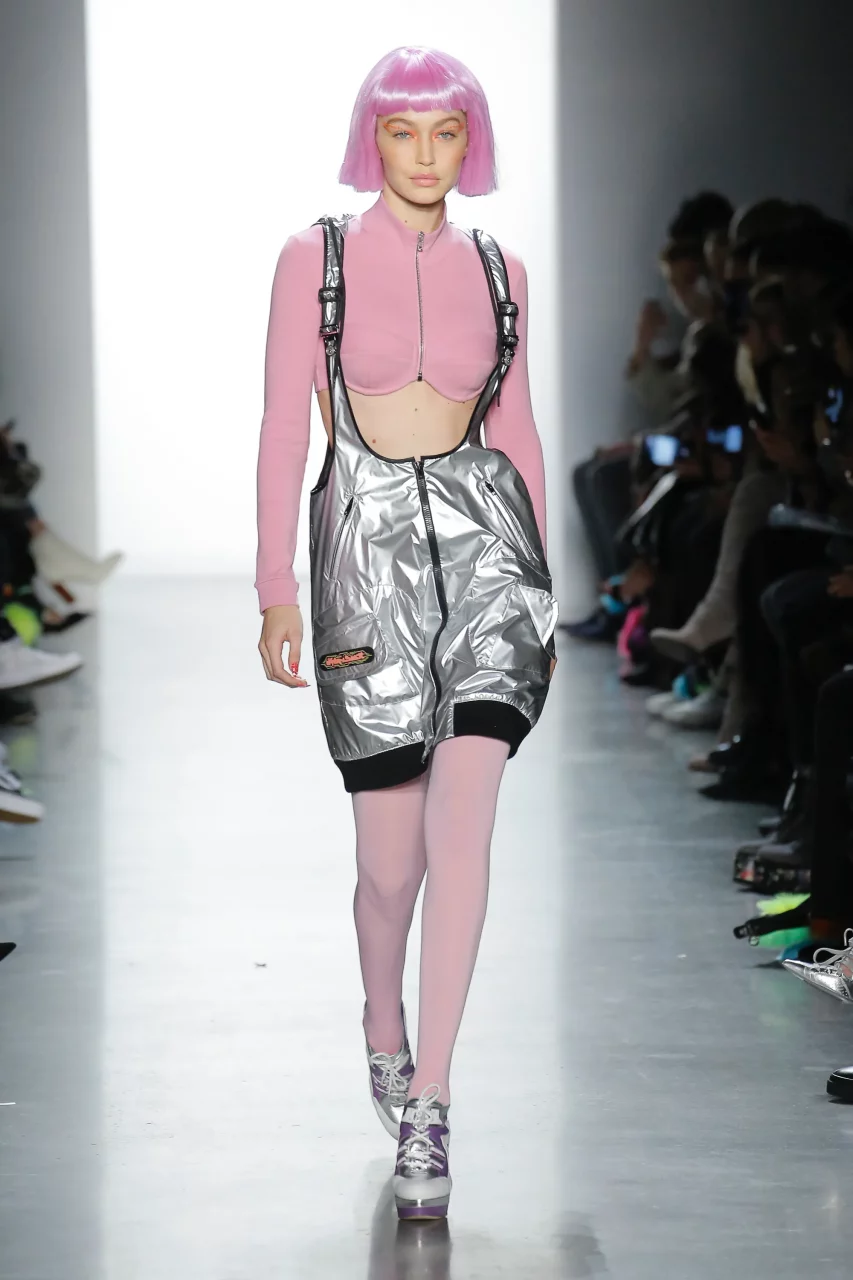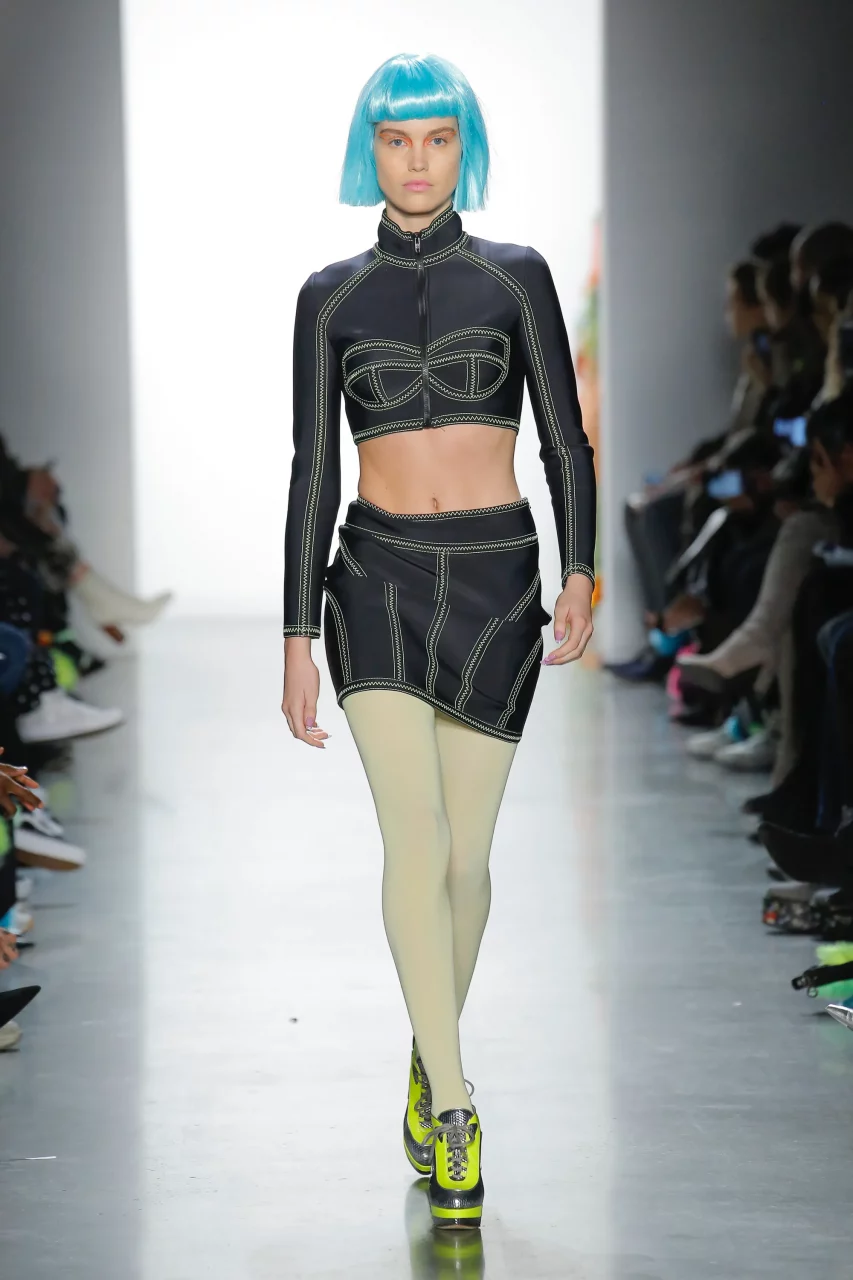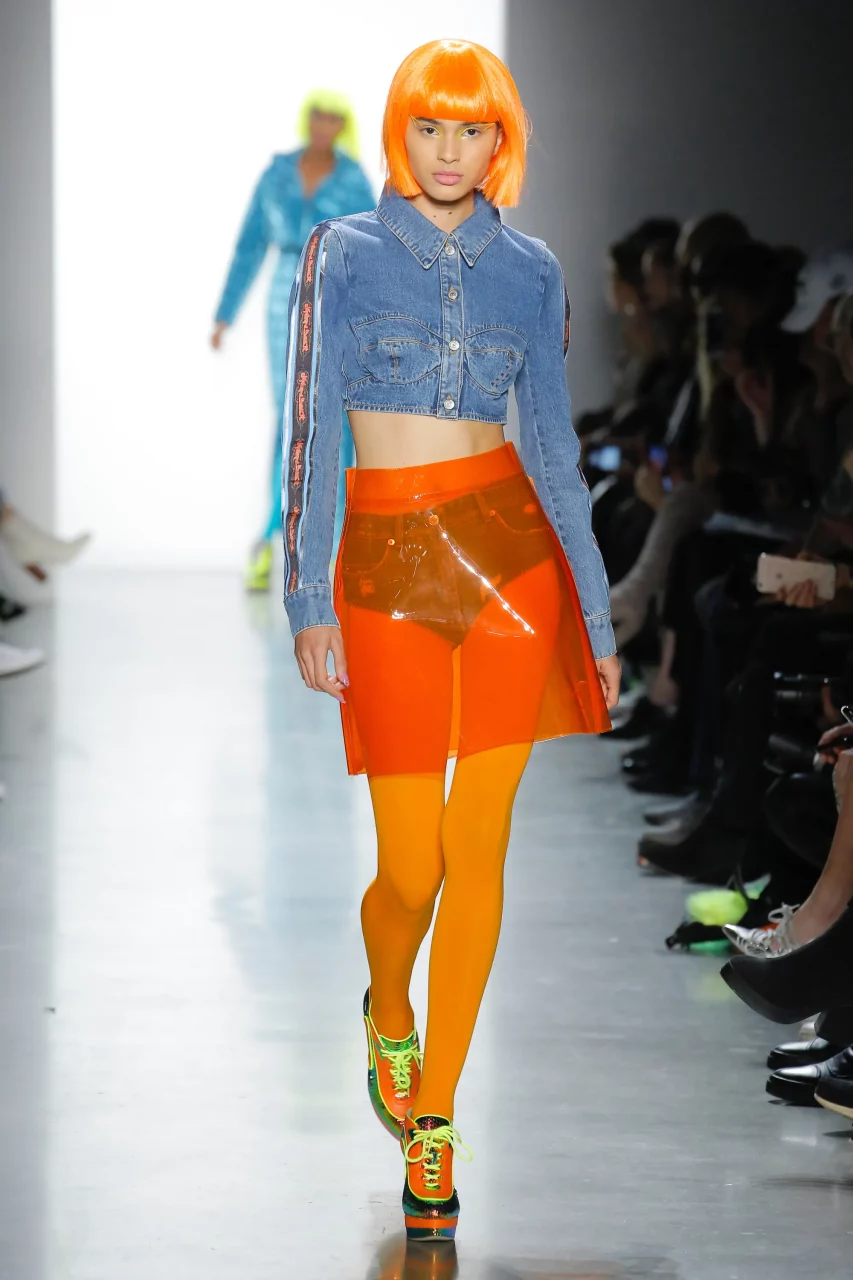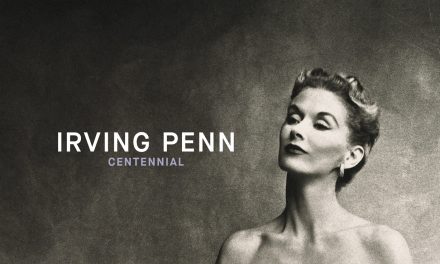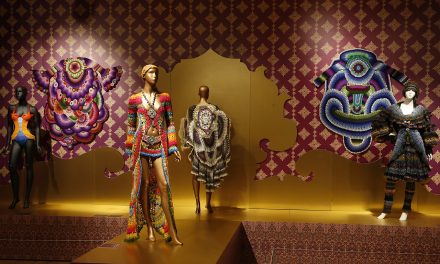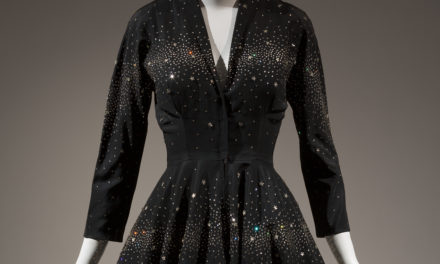Synopsis
In the 23rd century, ex-military taxi driver Korben Dallas must assist a mysterious being named Leeloo in recovering four mystical stones that are the key to the survival of the human race.
Directed by
Luc Besson
Release date
7 May 1997 (France)
9 May 1997 (USA)
Costume Designer
- Jean Paul Gaultier
Studio
- Gaumont
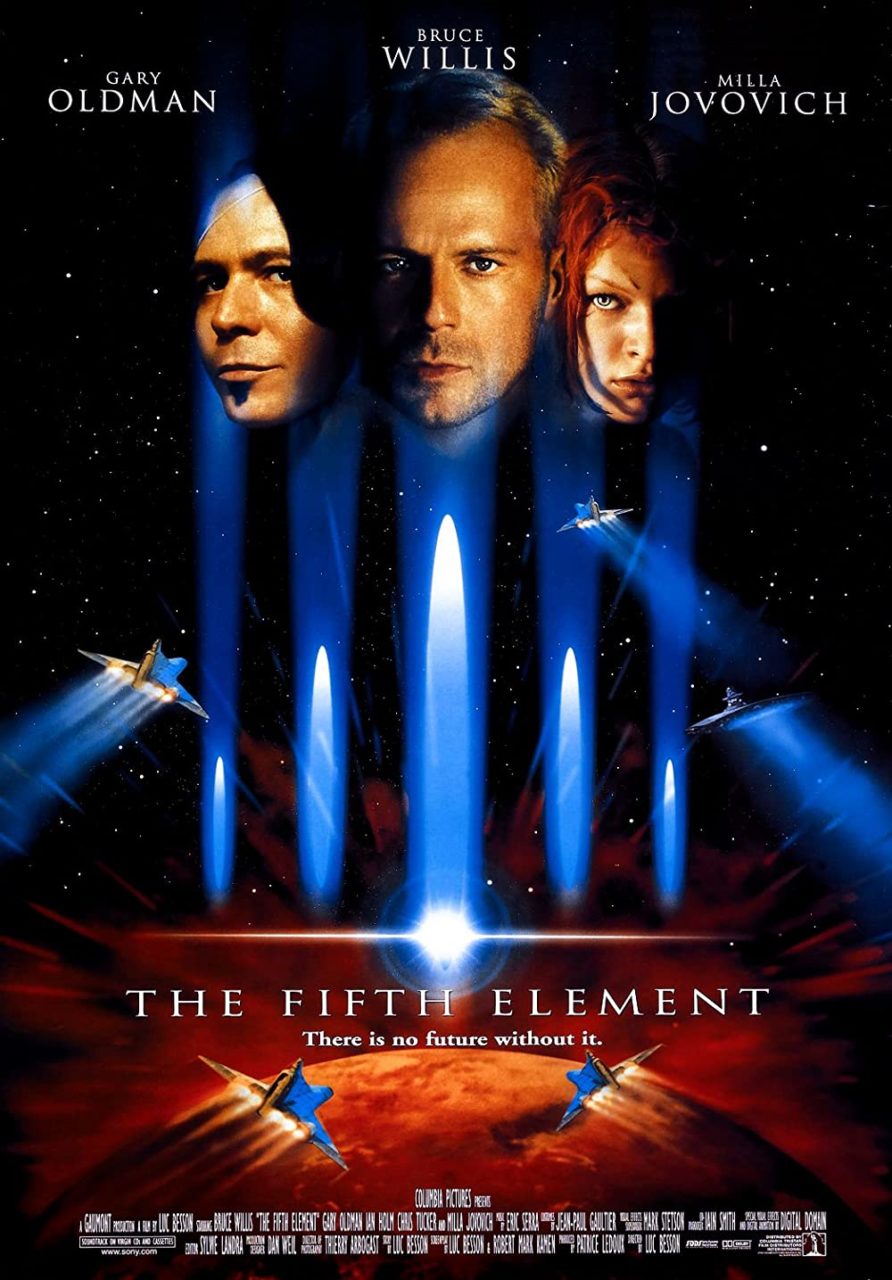
Film trailer
Introduction
About the Setting
The Fifth Element primarily takes place in two locations: New York City and Fhloston Paradise. In creating 23rd-century New York City, Gaultier did not simply imagine up a bizarre new style of dress for the future—his costumes for the film, though they vary widely, are all variants of contemporary ideas and styles of dress. Gaultier drew perhaps most from his own designs for the costumes in order to create street fashion that seemed familiar, yet unabashedly futuristic (Eloise). This knowledge of New York City fashion was, in fact, why Luc Besson chose Gaultier for this project. Besson said: “I wanted the best and that is Jean-Paul . . . He knows the color, he knows the flavor of New York” (Pener). Two aspects of Gaultier’s conception of 23rd-century NYC fashion are particularly notable, the first being a general rejection of gender-specific fashion motifs. This can be seen subtly in the backless orange tank top worn by Korben Dallas (Pener) (Fig. 1), or more obviously in the costumes of Ruby Rhod (Child) (Fig. 2).
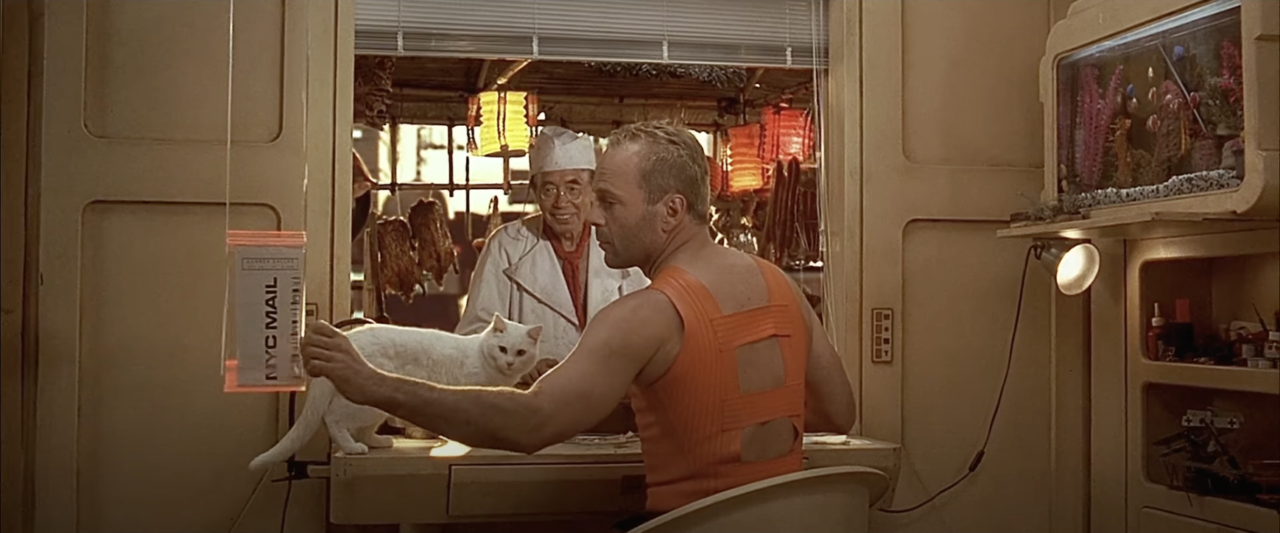
Fig. 1 - Bruce Willis as Korben Dallas. The Fifth Element, 1997. Gaumont. Directed by Luc Besson, costume design by Jean Paul Gaultier. Source: Author

Fig. 2 - Chris Tucker as Ruby Rhod. The Fifth Element, 1997. Gaumont. Directed by Luc Besson, costume design by Jean Paul Gaultier. Source: Author
The second motif is that of more provocative and revealing street fashions for men and women, visible in Dallas’s tank top (Fig. 1) and Leeloo’s white crop top look (Fig. 3), as well as in the costumes for less prominent characters, such as the transparent green skirt over fishnets worn by one of the Mangalore spies (Fig. 4). The influence of street fashion and acceptance of more revealing styles extends even into the workplace, as seen in the uniforms worn by the McDonald’s employees (Fig. 5) and by the stewardesses (Fig. 6).
Certain dress customs remain unchanged, however. While the 23rd-century streetwear and business uniforms are revealing by today’s standards, the military and government uniforms shown in the film remain very conservative. Likewise, certain formal dress codes appear to have changed very little. When Dallas attends the Diva’s performance on Fhloston Paradise, his choice to wear a traditional tuxedo is unquestioned, even as other characters present wear more futuristic and genderfluid ensembles.
Fig. 3 - Jacques Rey. Concept Art for Leeloo in "The Fifth Element" (1997), 1992. Source: Pinterest
Fig. 4 - Mangalore spy. The Fifth Element, 1997. Gaumont. Directed by Luc Besson, costume design by Jean Paul Gaultier. Source: SciFiEmpire.net
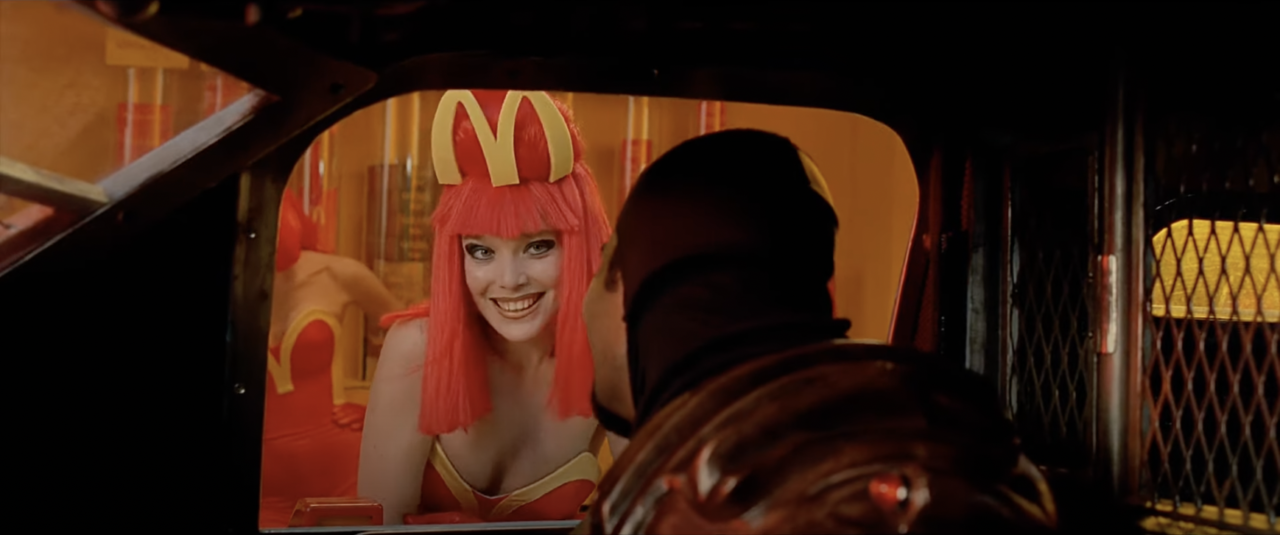
Fig. 5 - 23rd-century McDonalds employee. The Fifth Element, 1997. Gaumont. Directed by Luc Besson, costume design by Jean Paul Gaultier. Source: Author
Fig. 6 - Photo from the set. The Fifth Element, 1997. Gaumont. Directed by Luc Besson, costume design by Jean Paul Gaultier. Source: Geeks of Doom
About the Costume Designer: Jean Paul Gaultier
ean Paul Gaultier was born in Paris, France, in 1952 to a bookkeeper father and a secretary mother (McDowell 9–10). Although he had received no formal training in fashion design in his youth, his sketches were promising enough by the age of eighteen that he was hired as an assistant to Pierre Cardin in 1970 (McDowell 26). After Cardin, Gaultier worked with several other designers, including Jacques Esterel and Jean Patou, but eventually turned to freelance work (McDowell 38, 44, 54). It was not until 1976 that Gaultier would release his first personal collection, which did contain some glimpses of Gaultier’s future style, despite his retrospective view of the show as “a terrible flop” (McDowell 66). Nonetheless, each show solidified him more within the fashion world. One of his first breakthroughs was his “High Tech” show in 1980, which Women’s Wear Daily called “a mix of Star Trek, the high Courrèges-Cardin sixties, and the New Wave” (“Young Looks” 15). Gaultier’s celebrity—and his style—grew from there, earning him the moniker “l’Enfant terrible” for his shocking designs (Dorozhkina). In 1990, Gaultier was commissioned by Madonna to design costumes for her Blonde Ambition tour, a collaboration which led to the iconic “cone bra” that Madonna wore on the first night of her tour (Hess; McDowell 106). Gaultier has gone on to design costumes for several other musicians over the course of his career, including Lady Gaga, Rihanna, and Beyoncé (Anderson).
Gaultier’s first turn in film came in 1989 when he designed the costumes for Peter Greenaway’s The Cook, The Thief, His Wife & Her Lover. Gaultier proceeded to design costumes for several more films, including Luc Besson’s The Fifth Element (1997). Gaultier’s most persistent film partnership has been with the director Pedro Almodóvar, for whom Gaultier designed the costumes for Kika (1993), Bad Education (2004), and The Skin I Live In (2011). Gaultier has received two César nominations for his costume designs, once in 1998 for The Fifth Element and again in 1996 for Marc Caro and Jean-Pierre Jeunet’s City of Lost Children (1995).
In January 2020, Gaultier announced his retirement from haute couture, stating that his upcoming show, celebrating the 50th year of his career, would be his last (Ho). Despite his fashion shows coming to an end, Gaultier remains at the head of the Jean Paul Gaultier label (Ho).
About the Costume Design
F
or The Fifth Element, Gaultier drew from many of the same sources that inspire his collections, namely “bondage, punk rock, and lingerie” (Gallagher). One such display of Gaultier’s personal design influences show up in the Fhloston Paradise crew’s uniforms (Fig. 7), which echo Gaultier’s career-long use of maritime motifs (“How did French naval uniform”) (Fig. 8). However, these are not the only sources of inspiration for Gaultier’s costuming in The Fifth Element, nor are they, in many cases, the primary ones. Gaultier treated the over 1000 costumes he designed for the film as many smaller collections, each with its own style and influences (Eloise; HuntleyFilmArchives). While these influences may come from fashion of the past or fashion of the present, they are equally as likely to come from fictional fashion. In order to construct the many subgroups of 23rd-century dress, Gaultier drew on several already-established sci-fi designs. The uniforms worn by President Lindberg and his aide, for example (Fig. 9), resemble the Starfleet uniforms from Star Trek: Voyager (1995–2001) (Fig. 10) far more than they do bondage or street fashion. Even this in itself has a link to Gaultier, however, as the uniforms in Star Trek: The Original Series (1966–1969) drew from Cardin’s space-age designs, who was Gaultier’s former employer (Dalton; McDowell 26).
Fig. 7 - Fhloston Paradise crewmember. The Fifth Element, 1997. Gaumont. Directed by Luc Besson, costume design by Jean Paul Gaultier. Source: Amino
Fig. 8 - Jean Paul Gaultier (French, 1952-). L'Homme-objet, Spring-Summer 1983 Men’s Ready-To-Wear. Source: National Gallery of Victoria
Fig. 9 - Tom Lister Jr. as President Lindberg and Sonita Henry as President’s Aide. The Fifth Element, 1997. Gaumont. Directed by Luc Besson, costume design by Jean Paul Gaultier. Source: Filmgrab
Fig. 10 - Publicity photo. Star Trek: Voyager, 1995-2001. Created by Rick Berman, Michael Piller, and Jeri Taylor, costume design by Robert Blackman. Source: Nerdist
Character Costume Analysis
KORBEN DALLAS (PLAYED BY BRUCE WILLIS)
In order to create the costumes for Korben Dallas—the protagonist of the film—Gaultier pulled from many of the stylistic inspirations for his own fashion collections. Dallas’s outfit for the first half of the film consists of a ribbed tank top, dark pants, boots, and a short-sleeve cargo jacket—a very typical contemporary ensemble in theory, but made unique by certain fabric and design details. The ribbed tank top is not only orange, but backless and made out of a rubber-like material (Fig. 1 and Fig. 11).
Fig. 11 - Bruce Willis as Korben. The Fifth Element, 1997. Gaumont. Directed by Luc Besson, costume design by Jean Paul Gaultier. Source: The Arts Shelf
Fig. 12 - Bruce Willis as John McClane. Die Hard, 1988. Directed by John McTiernan, costume design by Marilyn Vance. Source: Filmgrab
The usage of a ribbed tank top draws from Bruce Willis’s own film history, echoing the white tank top he wears as John McClane in the 1988 film Die Hard (Loomes) (Fig. 12), but Gaultier gives the familiar look a 23rd-century twist, infusing his own interest in backless menswear (Fard) (Fig. 13) and utilizing Besson’s distinctly orange color vision for the film (McGovern). Speaking about his vision for the film’s costumes, Gaultier said, “I spoke with Luc about what is futuristic, and we decided that there could be elements of today . . . You could even imagine that there will be only retro clothes in the future. Everything’s possible” (Pener). Each piece in Dallas’s look takes a plain contemporary item and combines it with other elements to make it seem futuristic. For example, Dallas’s jacket first appears to be based on a simple comber jacket (Fig. 14)—perhaps in homage to Dallas’s military roots (Loomes)—but it is also inspired by street-influenced fashion looks like Issey Miyake’s 1996 Parachute Cargo Bomber jacket (Fig. 15). Gaultier then takes the jacket one step further by cutting off the sleeves and adding asymmetrical padding, turning the item from practical to purely fashionable (Fig. 6). Gaultier creates the same kind of transformation in the design for Dallas’s pants, which resemble football pants in the addition of kneepads and sewn detailing at the crotch and belt (Risu) (Fig. 16), yet seem wholly divorced from the football field in their end product (Fig. 6).
Fig. 13 - Jean Paul Gaultier (French, 1952-). L'Homme-objet, Spring-Summer 1983 Men’s Ready-To-Wear. Source: Vogue
Fig. 14 - Designer unknown. Jacket, 1994. Nylon, wadding, and cotton elasticated ribbing. England: Victoria and Albert Museum, T.939-1994. Source: Victoria and Albert Museum
Fig. 15 - Issey Miyake (Japanese, 1938-). Parachute Cargo Bomber, Fall-Winter 1996. Source: GQ
Fig. 16 - Designer unknown. Pittsburgh Steelers Jersey, worn by Terry Bradshaw, 1980. Nylon, wadding, and cotton elasticated ribbing. Washington, D.C.: National Museum of American History, 1980.0131.02. Pittsburgh Steelers Football Team (through Daniel M. Rooney), 1980. Source: Smithsonian National Museum of American History
LEELOO (PLAYED BY MILLA JOVOVICH)
Although Leeloo’s thermal bandages are perhaps the most enduring costume from The Fifth Element (Okwodu) (Fig. 17), the design did not emerge solely from the mind of Jean Paul Gaultier. Milla Jovovich said in a 2018 interview that the idea of the bandage look was actually a collaboration between her and Luc Besson:
“Luc and I began with talking about the costumes, and the whole idea of bandages just came out of our conversations, because it was like, Well, what could I be wearing? I was playing a tech subject that people needed to have access to, but I was also a humanoid and a woman who needed a bit of modesty, so we had the idea of covering me with bandages, which Luc gave to Gaultier to design the outfit.” (Eckardt)
Gaultier was the perfect designer to make their idea a reality. Having already used similar cage-like patterns on both his fashion designs (Fig. 18) and his previous costuming (Fig. 19), Gaultier’s design for the thermal bandages fit right in with his other looks for the film. Leeloo had been one of the most key elements of Besson’s vision for the film since his youth, thus many aspects of her look were more commanded by Besson than they were Gaultier, such as the decision to make her hair bright orange (Okwodu). However, Gaultier’s influence can still be seen in some of the detailing of the clothing. In the latter half of the film, Leeloo wears an ensemble consisting of a ribbed white crop top, tight gold pants, and a rubberized orange accessory that straddles the line between harness and suspenders (Fig. 20). The orange suspenders are decorated with holes that resemble the same futuristic aesthetic that Gaultier employed in his Fall 1995 collection (Fig. 21), which he released while The Fifth Element was in production (Pickard).
Fig. 17 - Milla Jovovich as Leeloo. The Fifth Element, 1997. Gaumont. Directed by Luc Besson, costume design by Jean Paul Gaultier. Source: Vogue
Fig. 18 - Dave Hogan, Grace Jones at the International Rock Awards, 1989. Dress by Jean Paul Gaultier. Around the World in 168 Outfits, Women’s Ready-To-Wear spring/summer 1989. Source: Twitter

Fig. 19 - Helen Mirren as Georgina Spica. The Cook, the Thief, His Wife & Her Lover, 1989. Directed by Peter Greenaway, costume design by Jean Paul Gaultier. Source: Author
Fig. 20 - Milla Jovovich as Leeloo. The Fifth Element, 1997. Gaumont. Directed by Luc Besson, costume design by Jean Paul Gaultier. Source: Vogue
Fig. 21 - Jean Paul Gaultier (French, 1952-). Look 80, Fall 1996 Ready-To-Wear. Source: Vogue
VITO CORNELIUS (PLAYED BY IAN HOLM)
Of all the main characters in the film, Vito Cornelius’s costume bears the fewest visual connections to Gaultier’s typical style, although Gaultier had played with religious fashion in the past, most notably in his Fall/Winter 1993 “Rabbi Chic” collection (stylerunner7). For Cornelius’s costume, though, Gaultier’s approach differed from that of the other characters in that he combined real religious influences with established sci-fi costuming. Just as the President’s suit is reminiscent of Starfleet uniforms, Cornelius’s look is reminiscent of Star Wars’s Jedi garb, particularly that of Obi-Wan Kenobi in Star Wars: Episode IV – A New Hope (Fig. 22). Both Obi-Wan and Cornelius’s costumes are assembled of nearly the same three items: a brown hooded cloak, a vest or robe, and a high-collared shirt (Fig. 22 and Fig. 23).
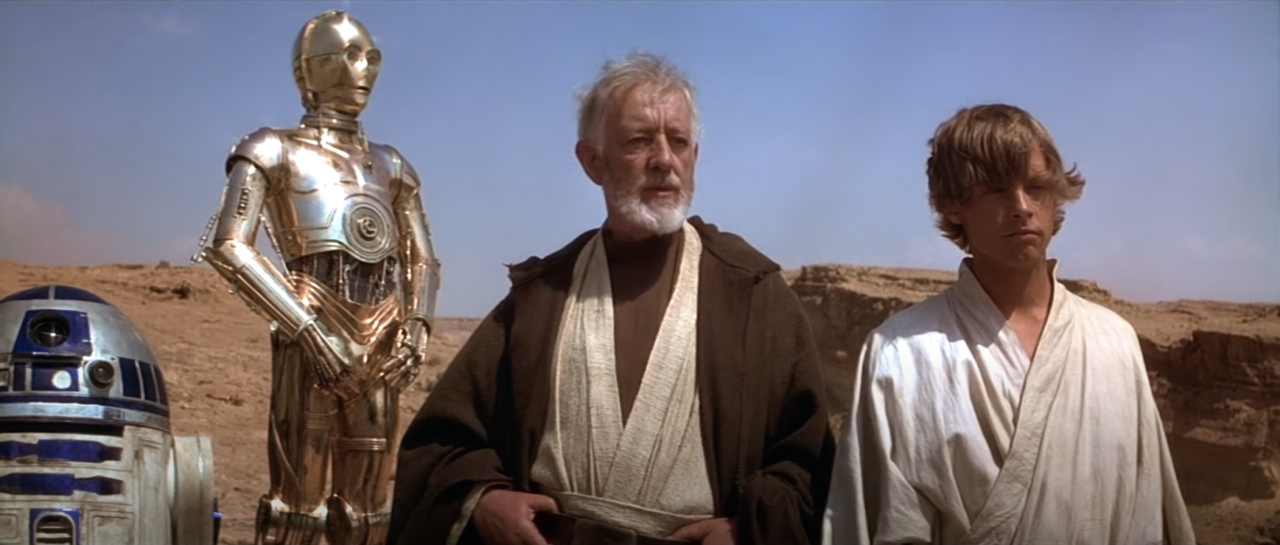
Fig. 22 - Anthony Daniels as C-3PO, Sir Alec Guinness as Obi-Wan Kenobi, and Mark Hamill as Luke Skywalker. Star Wars: Episode IV – A New Hope, 1977. Directed by George Lucas, costume design by John Mollo. Source: Author
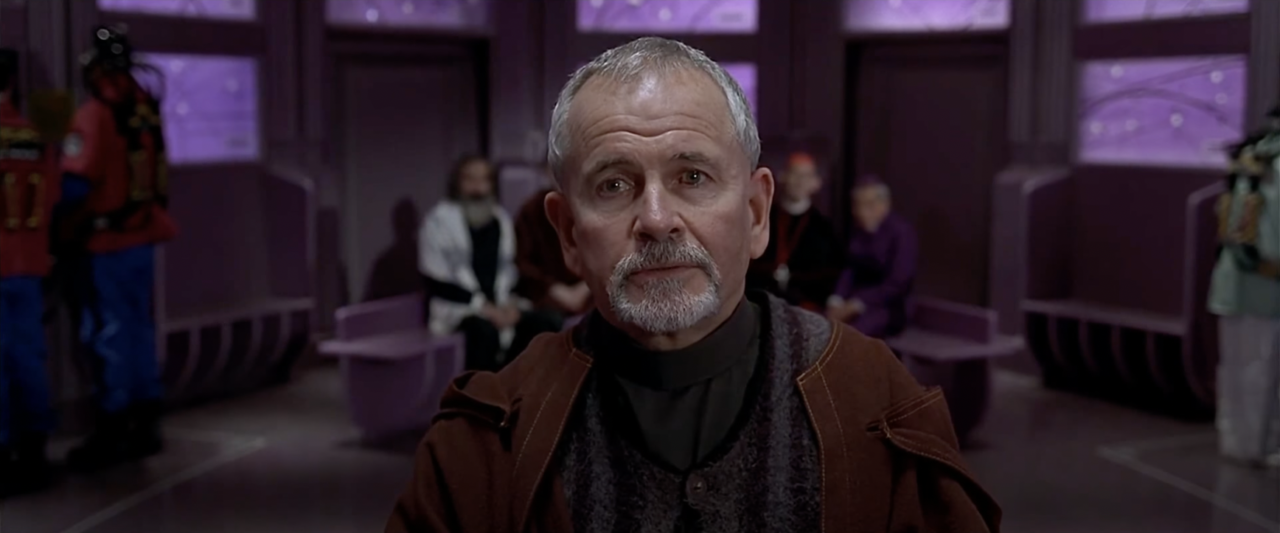
Fig. 23 - Sir Ian Holm as Vito Cornelius. The Fifth Element, 1997. Gaumont. Directed by Luc Besson, costume design by Jean Paul Gaultier. Source: Author
The likeness between the two characters is obvious even without the similarities between their styles of dress, though it is a particularly notable decision on Gaultier’s part to draw from another popular sci-fi media in order to provoke immediate understanding in the viewer of the nature of Cornelius’s background and position within the story. Cornelius’s dress draws from another major source as well—religious garb. Perhaps as a way to avoid outwardly resembling one specific religion, pieces and styles from several religions, as well as several time periods, are combined. The high-collared shirt that Cornelius wears, for example, resembles the black shirt and white clerical collar worn by Catholic priests (Fig. 24). Upon his first entrance in the film, Cornelius’s collar is even shown to be fastened in the back in the same manner as a clerical collar. Both Cornelius and his assistant David have haircuts that resemble more modern (or futuristic) variants on the tonsure haircut worn by medieval monks (Fig. 25)—Cornelius and David still have hair on the top of their scalps, but the hair is shorn cleanly at the neck in tonsure style (Fig. 26). David sports a black domed hat throughout the film (Fig. 26) that resembles a yarmulke (Fig. 27) but with a molded ziggurat-like shape that brings to mind the red “energy domes” worn by the band Devo (Fig. 28). The result of these various combinations of historical and pop-cultural influences is a futuristic priest look that is rooted in familiar concepts yet undoubtedly belongs to the future.
Fig. 24 - James H. Kerales. Rev. Dominic Orsini, Rev. Arthur Matott, and Sister Mary Leoline Entering Montgomery, 1965. Washington, D.C.: National Museum of African American History and Culture, 2015.129.84. Gift of Monica Karales and the Estate of James Karales, 2015. Source: National Museum of African American History and Culture
Fig. 25 - Hugo van der Goes (Flemish, 1440-1482). A Benedictine Monk, ca. 1478. Oil on wood; (9 7/8 x 7 3/8 in). New York: Metropolitan Museum of Art, 22.60.53. The Bequest of Michael Dreicer, 1921. Source: The Metropolitan Museum of Art
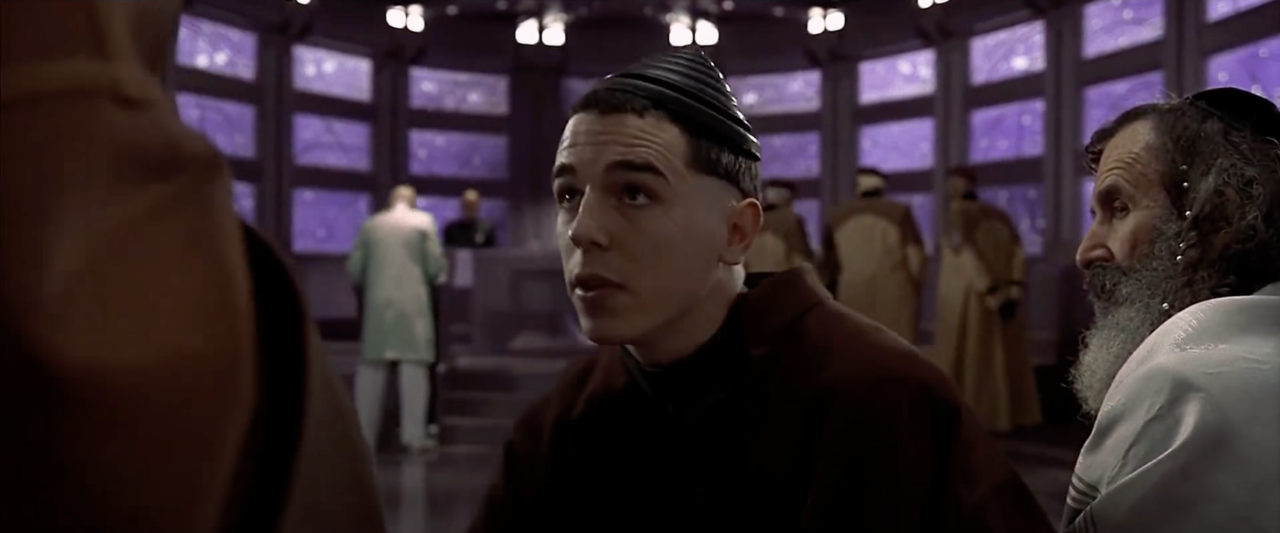
Fig. 26 - Charlie Creed-Miles as David. The Fifth Element, 1997. Gaumont. Directed by Luc Besson, costume design by Jean Paul Gaultier. Source: Author
Fig. 27 - Maker unknown. Festive skullcap (yarmulke), 18th century. Shpanyer-work, remains of gilt metal tinsel and purl couched raised embroidery, decorated with gold leaf and sequins; 12 x 22 cm. Jerusalem: Israel Museum, B50.02.1806. Received through JRSO. Source: Israel Museum
Fig. 28 - Artrouble. Album cover for Devo, Freedom of Choice, 1980. Lithograph; (12 3/8 x 12 3/8 in). New York: Museum of Modern Art, 144.2015. Committee on Architecture and Design Funds. Source: The Museum of Modern Art
RUBY RHOD (PLAYED BY CHRIS TUCKER)
Just as Korben Dallas’s costuming draws on Bruce Willis’s look in Die Hard, Ruby Rhod’s costuming draws on another familiar persona. However, it is not Chris Tucker himself, but Prince (Gallagher), who was supposed to play Ruby Rhod in the initial casting for the film in 1992, but turned down the role because he found Gaultier’s original designs for the character’s costumes “too effeminate” (Loriot 383). While the design that Gaultier showed to Prince included “netting which quite long body hair would pass through” (Loriot 383) (Fig. 29), the leopard-print jumpsuit eventually worn by Chris Tucker’s Ruby Rhod in the 1997 film (Fig. 2) would bear a striking resemblance to Prince’s onstage looks, particularly his hairstyle and yellow lace ensemble from the 1991 MTV Video Music Awards (Fig. 30). While Ruby Rhod’s leopard-print ensemble certainly draws inspiration from men’s jumpsuits from the 1970s (Fig. 31), it does so in combination with motifs relatively foreign to menswear. Ruby Rhod’s collar and neckline, for example, resembles the portrait-style collar used on many dresses in the 1950s, particularly those by the designer Charles James (Fig 32). Although The Fifth Element is filled with costumes that blur gender lines, Ruby Rhod’s looks are the most overt case of mixing traditionally masculine and feminine motifs, echoing the fluid gender performance of the character himself.
Fig. 29 - Jean Paul Gaultier (French, 1952-). Concept art for Ruby Rhod, 1992. Source: Film Sketchr
Fig. 30 - Retna. Prince at the MTV Video Music Awards, Los Angeles, 1991. Source: Mr Porter
Fig. 31 - Men's jumpsuit ad. Mantique, 1970s. Source: PlaidStallions.com
Fig. 32 - Charles James (American, 1906-1978). Evening ensemble, 1955. Pink taffeta, black velvet, and pink satin. New York: The Museum at FIT, P87.31.11. Museum purchase, 1987. Source: The Museum at FIT
Influence on Fashion
espite the many negative critiques of the film, upon its release and even into the present day, The Fifth Element continues to hold power within pop culture by way of—and perhaps even because of—its costume design. With a designer like Gaultier at the helm, it is no wonder that the film was an inspiration for many design collections in the years following. Leeloo’s bandage costume (Fig. 17) has been an especially rich source of inspiration for designers. In 1998, just one year after The Fifth Element came out in theaters, Alexander McQueen released a ready-to-wear collection that contained several looks reminiscent of Gaultier’s costumes (Fard), not the least of which was a strappy white design with an uncanny resemblance to Leeloo’s thermal bandages (Fig. 33). The bandages—as well as other Fifth Element-esque designs—made an appearance again in Pam Hogg’s Autumn/Winter 2012 ready-to-wear collection (Gallagher) (Fig. 34). Looks inspired by Leeloo’s bandages show up even off the runway, as can be seen in Taylor Swift’s 2015 “Bad Blood” music video (Stahler) (Fig. 35) and Doja Cat’s 2022 “Get Into It (Yuh)” music video (Fig. 36), the latter of which also features ship crew uniforms reminiscent of The Fifth Element’s flight attendants (Fig. 37). Leeloo’s short fiery hair may have started its own trend in the late 90s/early 2000s, as well, showing up on the heroines of both Run Lola Run (1998) (Fig. 38) and Alias (2001-2006) (Fard) (Fig. 39).

Fig. 35 - Taylor Swift in “Taylor Swift – Bad Blood ft. Kendrick Lamar,” directed by David Gould and Joseph Kahn. YouTube, May 17, 2015, https://youtu.be/QcIy9NiNbmo. Source: Author
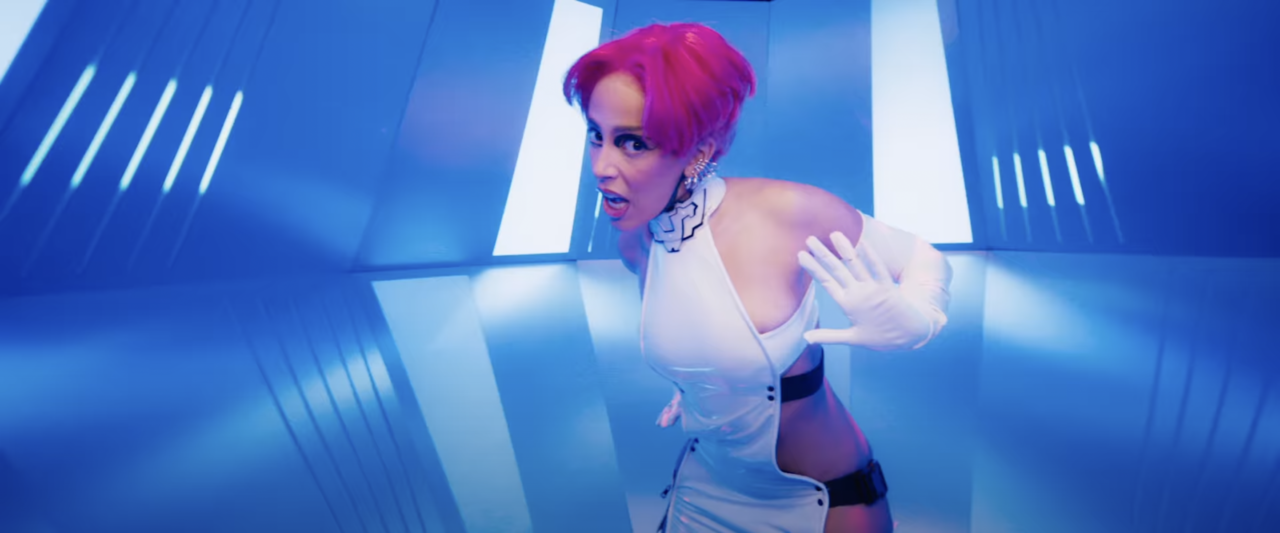
Fig. 36 - Doja Cat in “Doja Cat - Get Into It (Yuh) (Official Video)” directed by Mike Diva. YouTube, January 31, 2022, https://youtu.be/9Ko-nEYJ1GE. Source: Author

Fig. 37 - “Doja Cat - Get Into It (Yuh) (Official Video)” directed by Mike Diva. YouTube, January 31, 2022, https://youtu.be/9Ko-nEYJ1GE. Source: Author
Fig. 38 - Moritz Bleibtreu as Manni and Franka Potente as Lola. Run Lola Run, 1998. Directed by Tom Tykwer, costume design by Monika Jacobs. Moviestore/Shutterstock. Source: People
Fig. 39 - Jennifer Garner as Sydney Bristow. Alias, season 1, episode 1, “Truth Be Told” (Aired September 30, 2001). Directed by J. J. Abrams, costume design by Linda Serijan. Source: Decider
What is perhaps most surprising is the breadth of inspiration that The Fifth Element has provided; it is not just the bandage dress or the orange hair that have inspired designers, but costumes shown for only a few seconds onscreen, such as the 23rd-century McDonald’s employee uniforms (Fig. 5). In 2014, Moschino released a ready-to-wear collection that included several McDonald’s-inspired looks (Fig. 40), one of which was notably worn by Katy Perry at a 2014 press conference (Fig. 41). While the correlation between Moschino’s 2014 collection and a science fiction film released more than a decade earlier may seem dubious at first (Gallagher), the creative director of Moschino, Jeremy Scott, has cited Jean Paul Gaultier as one of his primary influences (Widdicombe). In fact, in 2018 Jeremy Scott released a ready-to-wear collection that drew from nearly every facet of The Fifth Element’s costuming (Gallagher), from Leeloo’s crop top (Fig. 42), to the midriff-baring flight attendants (Fig. 43), to the Mangalore spy’s transparent miniskirt (Fig. 44), with every model in, perhaps unsurprisingly, a brightly-colored short wig. Of course, The Fifth Element is popular with more than just the fashion design crowd—rarely does a comic convention pass by without at least one Leeloo/Dallas duo, even two decades later (Takingbacksam KidSkully).
Fig. 40 - Moschino. Look 8, Fall 2014 Ready-To-Wear, modeled by Anna Ewers. Photographed by Yanni Vlamos, indigitalimages.com. Source: Vogue
Fig. 41 - Jeremy Scott (American, 1975-). Katy Perry at the U-Express Live 2014 Press Conference, March 2, 2014, dress and bag by Moschino. Source: E! Online
Fig. 42 - Jeremy Scott (American, 1975-). Look 1, Fall 2018 Ready-To-Wear, modeled by Gigi Hadid. Photographed by Luca Tombolini, indigital.tv. Source: Vogue
Fig. 43 - Jeremy Scott (American, 1975-). Look 26, Fall 2018 Ready-To-Wear, modeled by Luna Bijl. Photographed by Luca Tombolini, indigital.tv. Source: Vogue
Fig. 44 - Jeremy Scott (American, 1975-). Look 42, Fall 2018 Ready-To-Wear, modeled by Aira Ferreira. Photographed by Luca Tombolini, indigital.tv. Source: Vogue
Conclusion
hat a good/bad sci-fi film like The Fifth Element (Asher-Perrin) is continually returned to so unabashedly by both fashion designers and moviegoers alike is a testament to Gaultier’s work, as well as to the importance of costume design within film as a medium. While some cite the humor in Besson’s film as the reason for its lasting impact (Asher-Perrin), it likely could not have survived the test of time on this alone. The costumes in the film are what make its presence at conventions and within pop culture seemingly endless, and this visual repetition is what keeps the film alive. The Fifth Element is just one example of a film that could have fallen prey to its often “incoherent” and “problematic” plot, as cited by critics of the past and present (Pener; Child), but has been able to endure because of its immense visual impact.
References:
- Anderson, Ariston. “Jean Paul Gaultier Reflects on How Cinema Shaped His Career.” The Hollywood Reporter, August 1, 2017. www.hollywoodreporter.com/lifestyle/style/jean-paul-gaultier-reflects-how-cinema-shaped-his-career-1025941/.
- Asher-Perrin, Emmet. “20 Years On, The Fifth Element is Still One of the Best/Worst Sci-Fi Films Ever.” TOR.com, May 9, 2017. www.tor.com/2017/05/09/the-fifth-element-20th-anniversary/.
- Beghin, Claire. “Jean Paul Gaultier’s most showstopping costumes in cinema.” Vogue, May 20, 2020. www.vogue.fr/fashion-culture/article/jean-paul-gaultier-most-showstopping-costumes-in-cinema-pedro-almodovar.
- Child, Ben. “The Fifth Element at 20: gender-bending sci-fi or sexist space shambles?” The Guardian, May 9, 2017. www.theguardian.com/film/2017/may/09/the-fifth-element-20th-anniversary-luc-besson-ruby-rhod.
- Dalton, Matthew. “Pierre Cardin, Fashion Designer of the Space Age, Dies at 98.” The Wall Street Journal, December 29, 2020. www.wsj.com/articles/pierre-cardin-fashion-designer-of-the-space-age-dies-at-98-11609252021.
- Desowitz, Bill. “How Luc Besson’s ‘Valerian and the City of a Thousand Planets’ Was Inspired by His Trippy Sci-Fi ‘The Fifth Element.’” IndieWire, July 24, 2017. www.indiewire.com/2017/07/valerian-and-the-city-of-a-thousand-planets-luc-besson-the-fifth-element-sci-fi-1201849152/.
- Dorozhkina, Anna. “Jean-Paul Gaultier: how l’enfant terrible pranked all fashion industry.” World Fashion Channel, November 20, 2020. https://wfc.tv/en/articles/brand-history/history-of-jean-paul-gaultier.
- Eckardt, Stephanie. “Milla Jovovich, Kenzo’s New Muse, Reminisces on The Fifth Element and Fashion Week’s Former Love of Champagne at 10 a.m.” W Magazine, September 6, 2018. www.wmagazine.com/story/milla-jovovich-fashion-week-modeling-interview.
- Eloise, Marianne. “A closer look at Gaultier’s Fifth Element costume design.” Dazed, May 1, 2017. www.dazeddigital.com/fashion/article/35459/1/a-closer-look-at-gaultiers-fifth-element-costume-design.
- Fard, Farah Joan. “From Blade Runner to The Force Awakens, How Sci-Fi Influences Fashion.” Vanity Fair, October 5, 2017. www.vanityfair.com/style/2017/10/sci-fi-fashion.
- Freeman, Thomas. “The ’90s Sci-Fi Cult Classic ‘The Fifth Element’ is Returning to Theaters for Its 20th Anniversary.” Maxim, April 11, 2017. www.maxim.com/entertainment/the-fifth-element-20th-anniversary-2017-4.
- Gallagher, Brenden. “The Sci-Fi Spectale of Jean-Paul Gaultier’s Work in ‘The Fifth Element.’” Grailed, May 29, 2018. www.grailed.com/drycleanonly/the-fifth-element-style-impact.
- Greenblatt, Leah. “There will never be another Fifth Element — and more amazing stories about the making of Luc Besson’s 1997 classic.” Entertainment Weekly, July 19, 2017. https://ew.com/movies/2017/07/19/fifth-element-oral-history-luc-besson/.
- Hess, Liam. “The Story Behind Madonna’s Iconic Jean Paul Gaultier Cone Bra.” Vogue, April 18, 2020. www.vogue.com/article/madonna-blonde-ambition-jean-paul-gaultier-cone-bra.
- Ho, Jonathan. “Jean Paul Gaultier is Leaving Haute Couture but his Legacy is Immortalised in The Fifth Element.” Luxuo, January 20, 2020. www.luxuo.com/culture/culture-featured/jean-paul-gaultier-is-leaving-haute-couture-but-his-legacy-is-immortalised-in-the-fifth-element.html.
- HuntleyFilmArchives. “Jean Paul Gaultier on the Scale of The Fifth Element, 1990’s – Film 93097.” YouTube video, 1:36. December 15, 2014. https://youtu.be/HeGrtvW9qM0.
- Loomes, Victoria. “Gaultier and the Fifth Element.” Girls Do Film, June 8, 2014. https://girlsdofilm.wordpress.com/2014/06/08/gaultier-and-the-fifth-element/.
- Loriot, Thierry-Maxime. The Fashion World of Jean Paul Gaultier : from the Sidewalk to the Catwalk. Montreal: Museum of Fine Arts, 2011, www.worldcat.org/oclc/863686943.
- McDowell, Colin. Jean Paul Gaultier. New York: Viking Studio, 2001, www.worldcat.org/oclc/757651112.
- McGovern, Joe. “Take a look at the ‘blue ice’ poster for Luc Besson’s Valerian.” Entertainment Weekly, March 24, 2017. https://ew.com/movies/2017/03/24/exclusive-poster-debut-valerian-city-thousand-planets/.
- Okwodu, Janelle. “Before You See Valerian, Revisit The Fifth Element’s Iconic Costumes With Milla Jovovich and Jean Paul Gaultier.” Vogue, July 21, 2017. www.vogue.com/article/the-fifth-element-jean-paul-gaultier-milla-jovovich-20th-anniversary-valerian.
- Pener, Degen. “The fashion genius behind ‘The Fifth Element.’” Entertainment Weekly, May 23, 1997. https://ew.com/article/1997/05/23/fashion-genius-behind-fifth-element/.
- Pickard, Joe, dir. “Want to Know Why Jean Paul Gaultier’s Fall 1995 Collection The Best Show Ever? Watch This Video.” Vogue, April 1, 2020. www.vogue.com/video/watch/best-show-ever-video-series-jean-paul-gaultier-fall-1995-cyber-collection.
- Plim, Alex, Tom Huddleston, Geoff Andrew, Catherine Bray, Dave Calhoun, Cath Clarke, Alex Dudok de Wit, et al. “The 100 best sci-fi movies.” Time Out, June 3, 2021. www.timeout.com/london/film/the-100-best-sci-fi-movies.
- Risu. “The Fifth Element – Korben Dallas.” Replica Costumes, RPF, May 8, 2013. www.therpf.com/forums/threads/the-fifth-element-korben-dallas.184603/.
- “How did French naval uniform change the fashion world?” Royal Museums Greenwich. Accessed January 26, 2022. www.rmg.co.uk/stories/blog/stripes-sea-history-breton-top.
- Stahler, Kelsea. “Every Swifty Movie Reference In ‘Bad Blood.’” Bustle, May 17, 2015. www.bustle.com/articles/83960-taylor-swift-bad-blood-video-movie-references-from-that-fifth-element-get-up-to-some-serious-hunger.
- stylerunner7. “Jean Paul Gaultier Rabbi Chic fall winter 1993, Part 1.” YouTube video, 9:40. August 29, 2008. https://youtu.be/7WrgRjNEXcQ.
- Takingbacksam KidSkully. “Dallas & Leeloo Get Lost @AX(AnimeExpo)2019.” YouTube video, 3:49. July 10, 2019. https://youtu.be/O98Rp2OvXys.
- Trenholm, Richard. “At 20, ‘The Fifth Element’ is still out of this world.” CNET, August 5, 2017. www.cnet.com/news/the-fifth-element-20th-anniversary-milla-jovovich-bruce-willis-luc-besson/.
- Widdicombe, Lizzie. “Barbie Boy.” The New Yorker, March 14, 2016. www.newyorker.com/magazine/2016/03/21/jeremy-scotts-new-moschino.
- Woerner, Meredith. “The 20 Best Worst Science Fiction Movies of All Time.” Gizmodo, September 18, 2008. https://gizmodo.com/the-20-best-worst-science-fiction-movies-of-all-time-5052003.
- “Young Looks Spark Paris: Kenzo, Valentino Spark Paris Looks.” Women’s Wear Daily, March 31, 1980, 1, 15. www.proquest.com/magazines/young-looks-spark-paris/docview/1627383953/se-2?accountid=27253.


